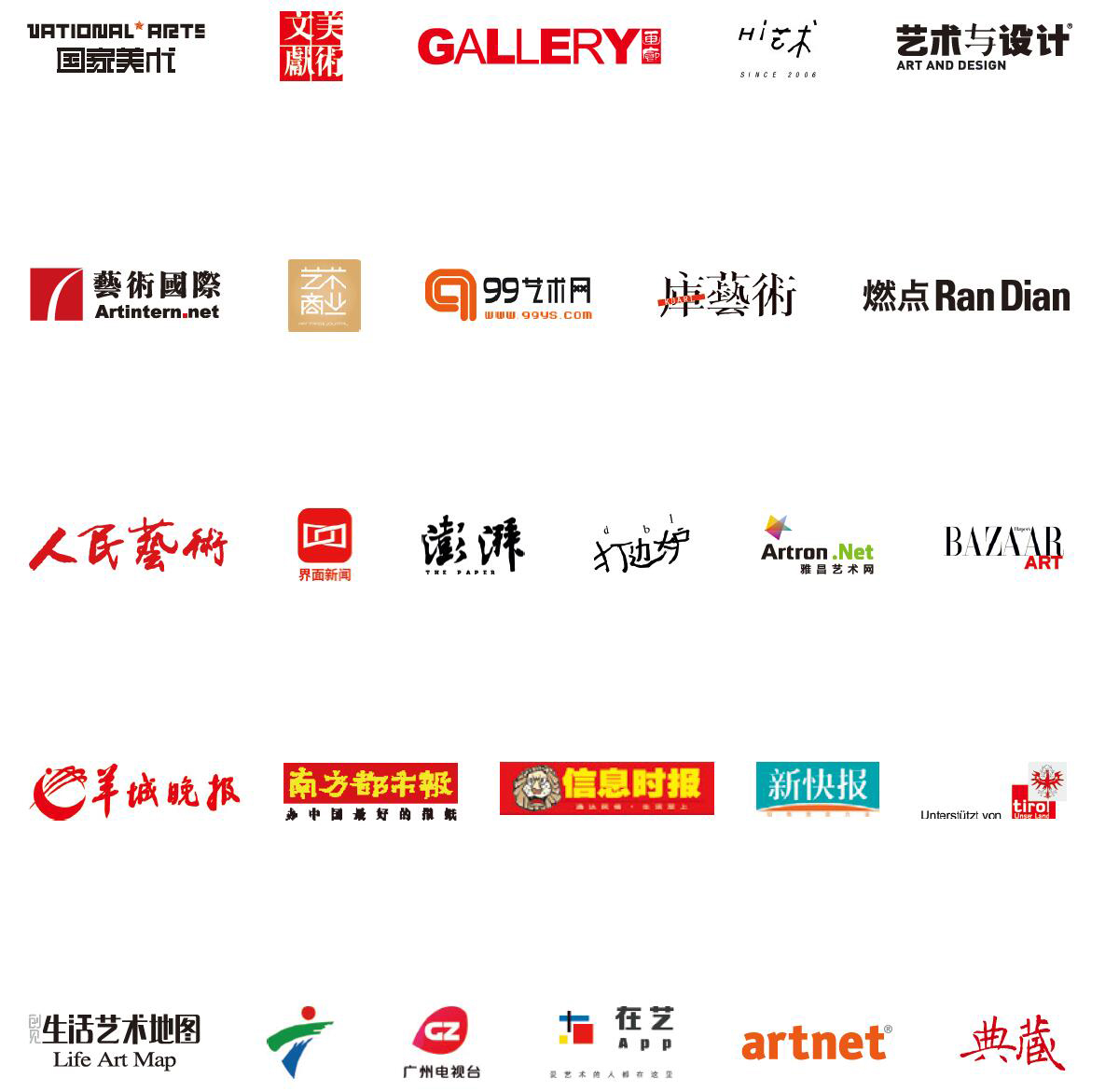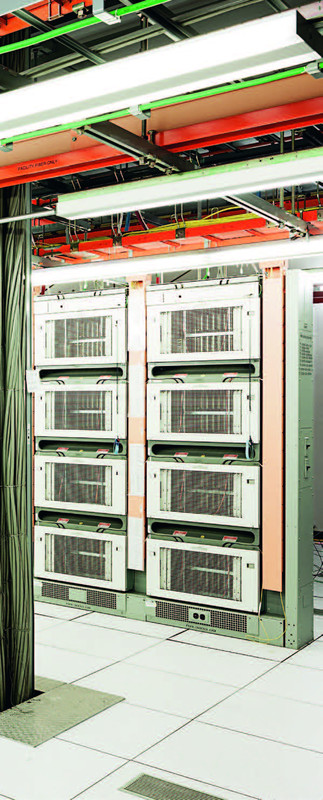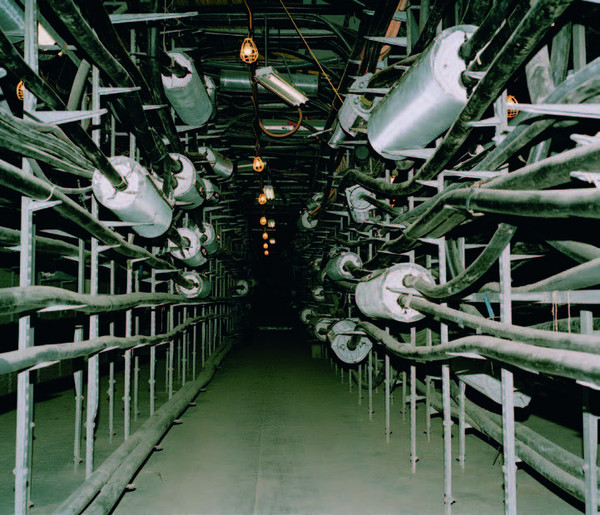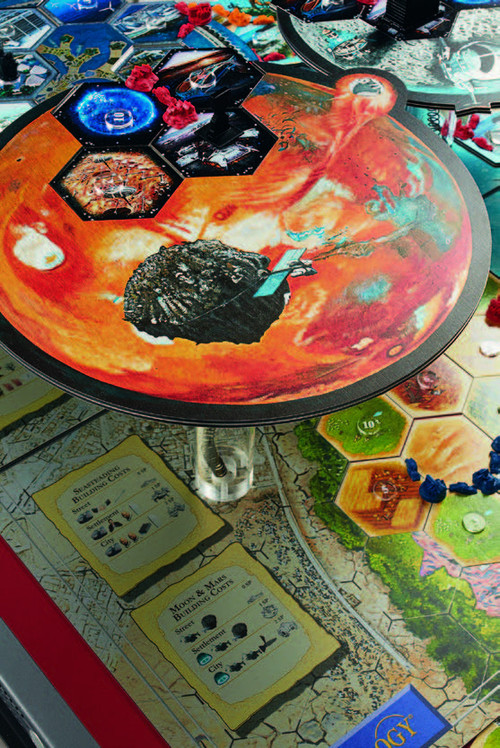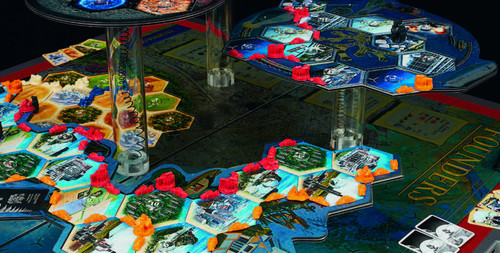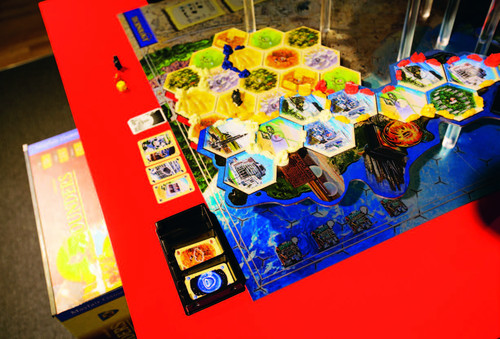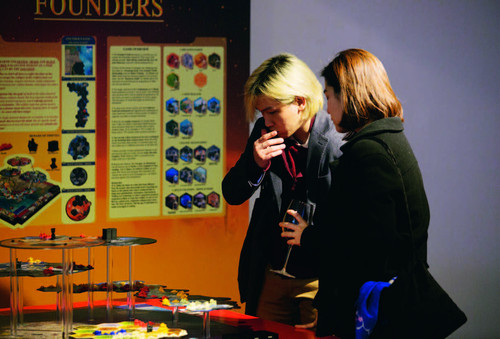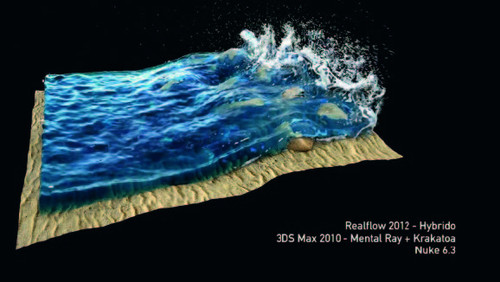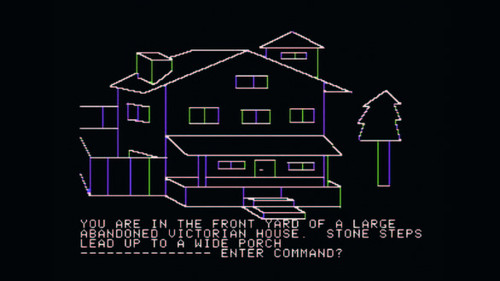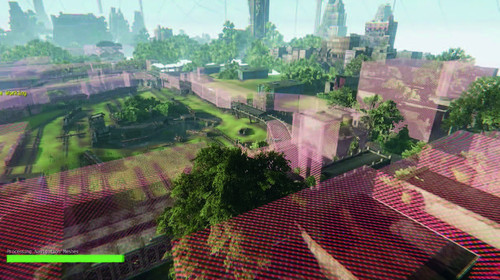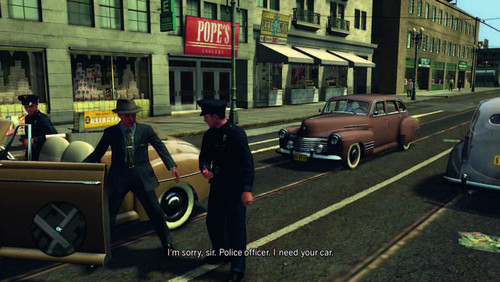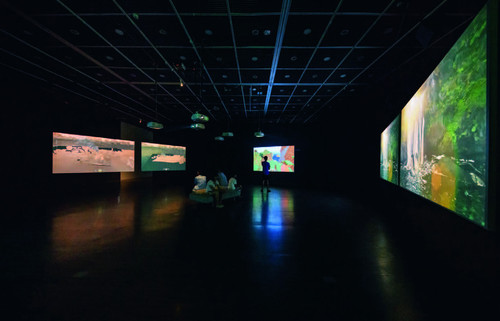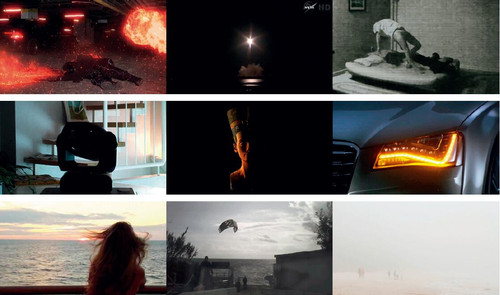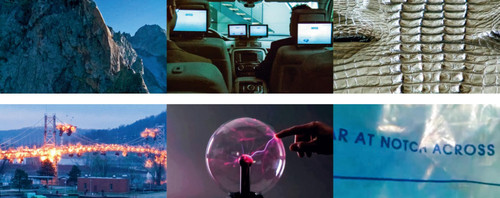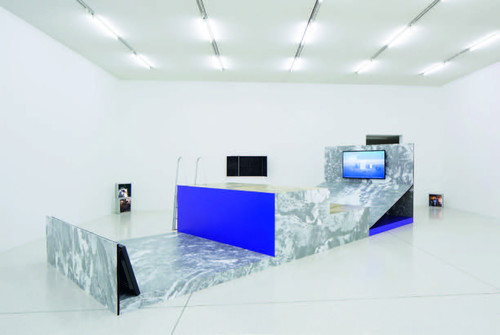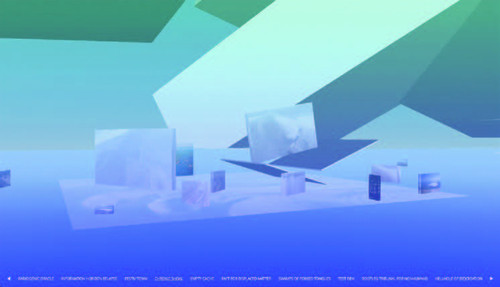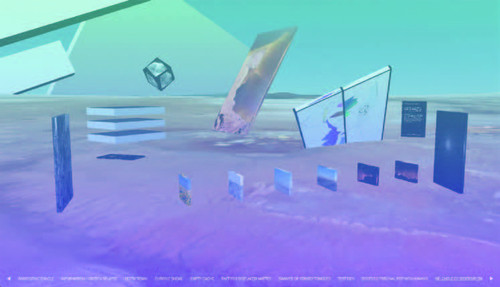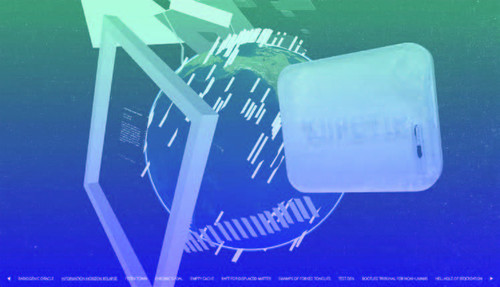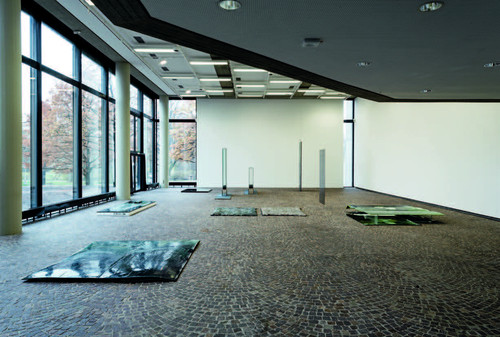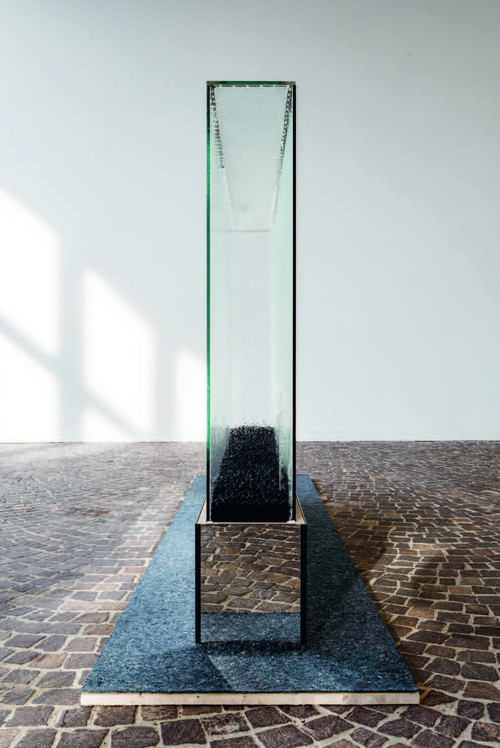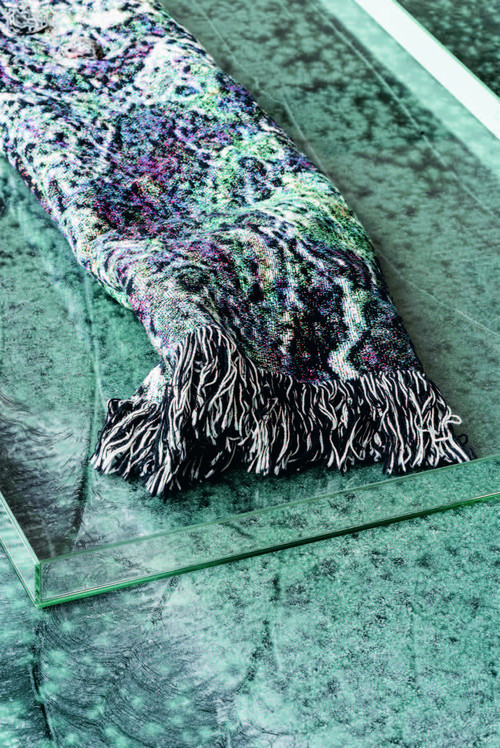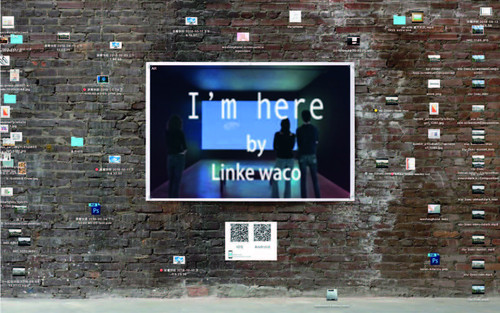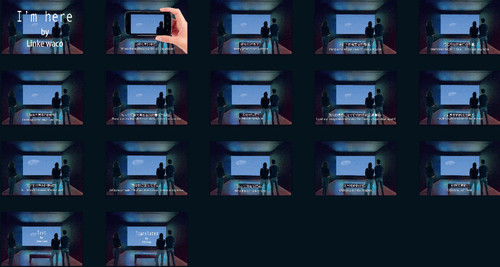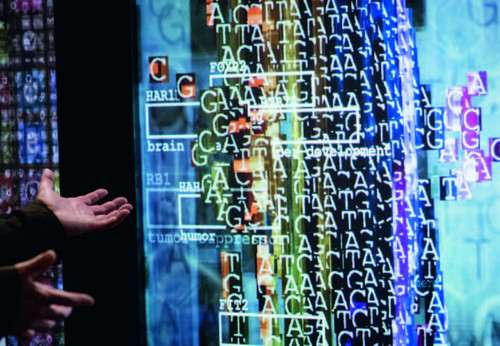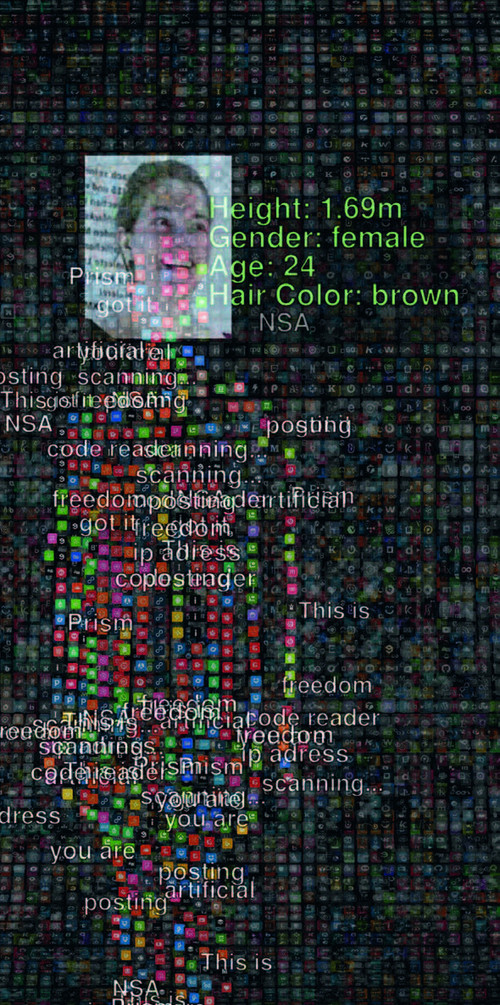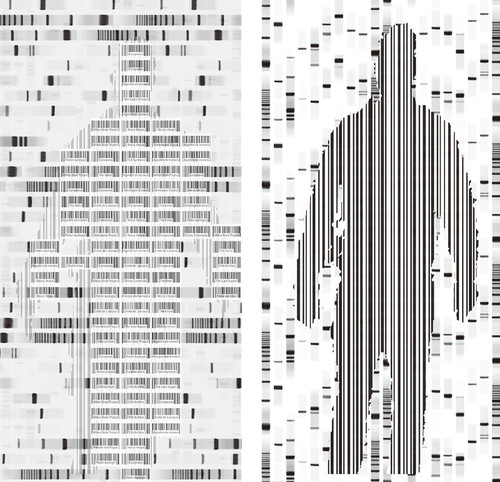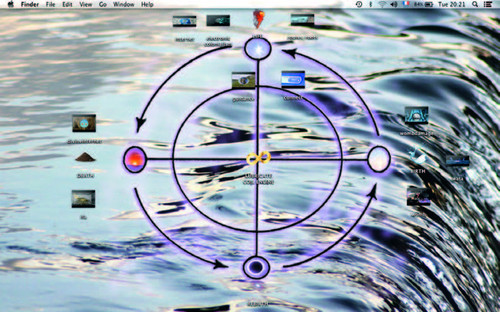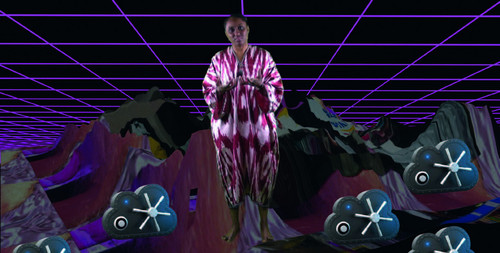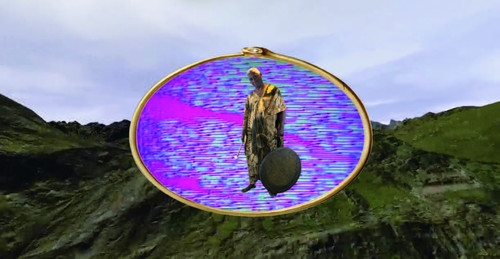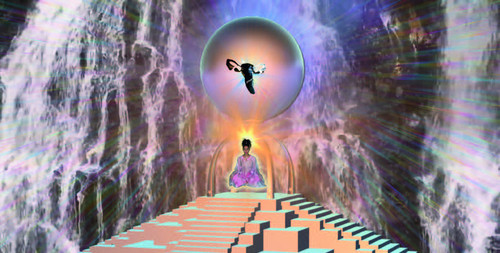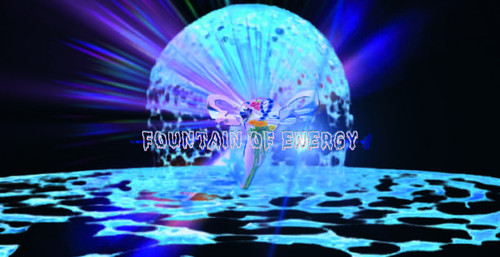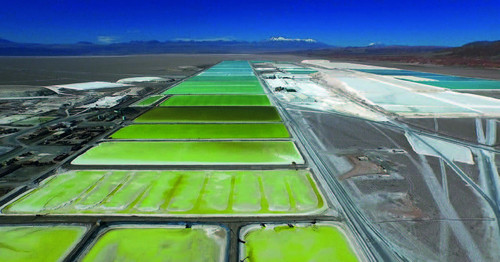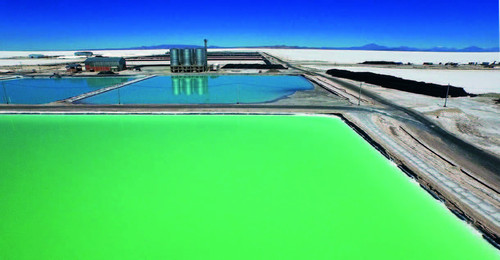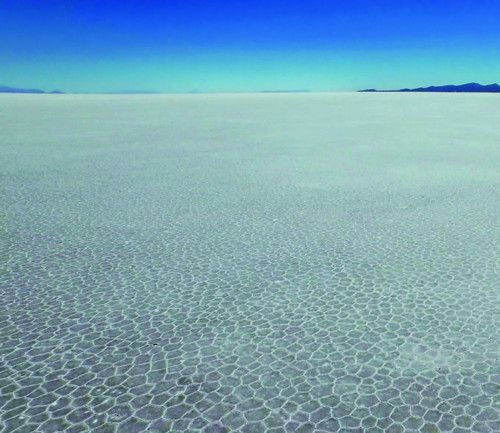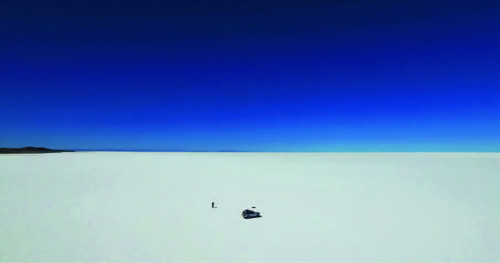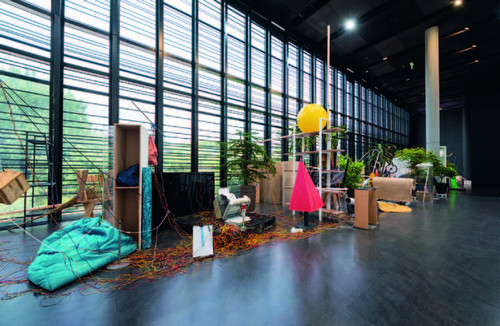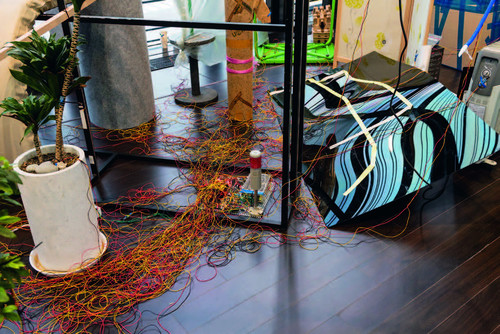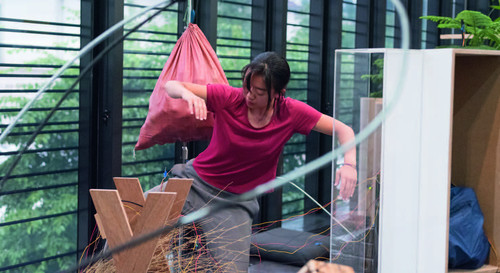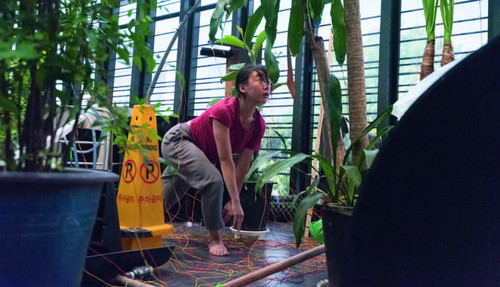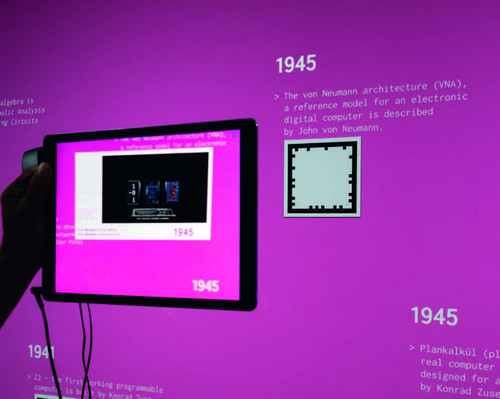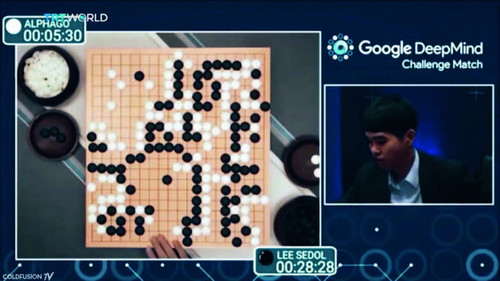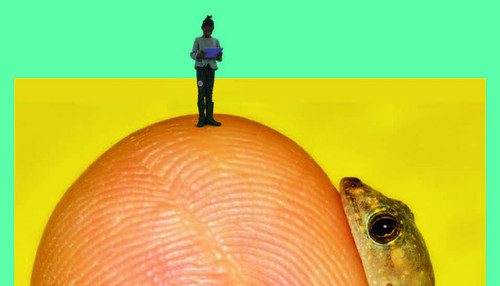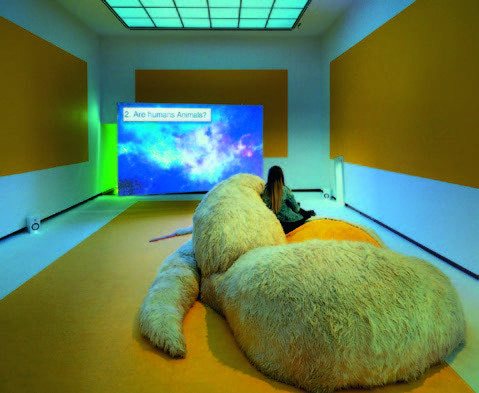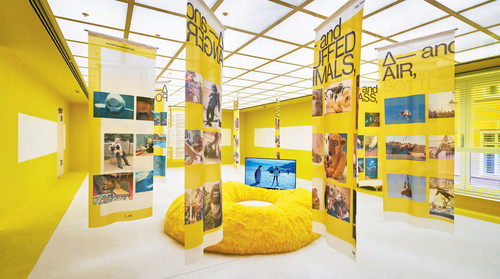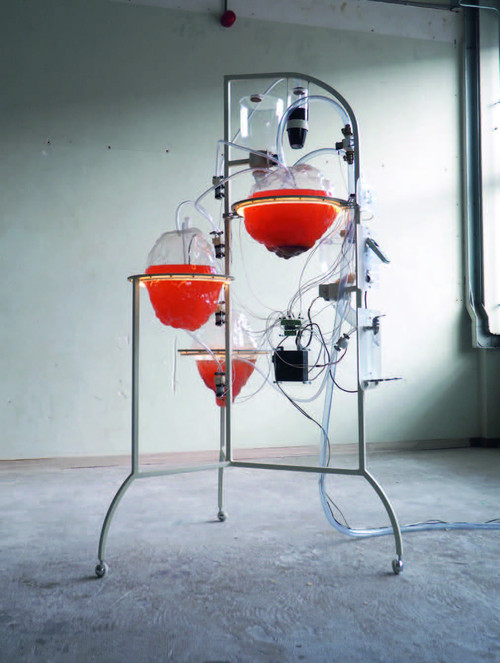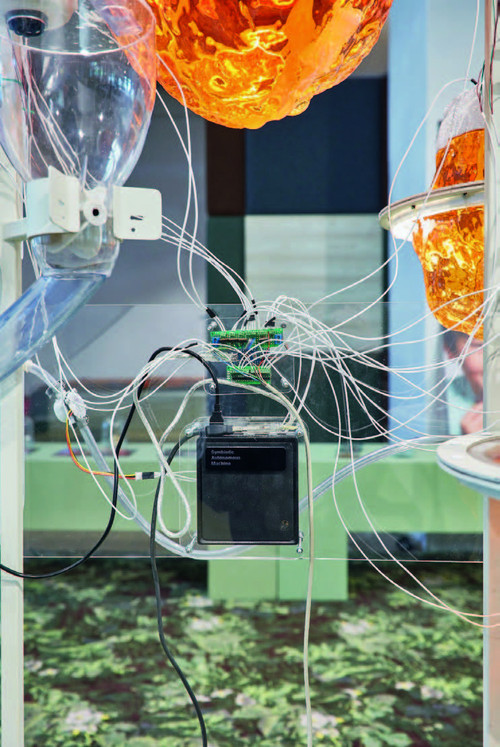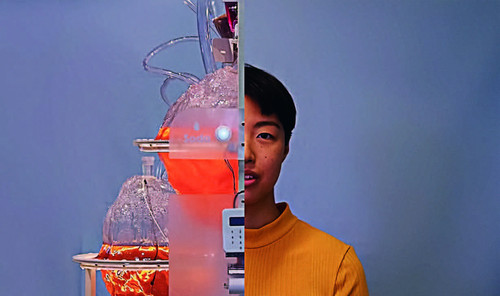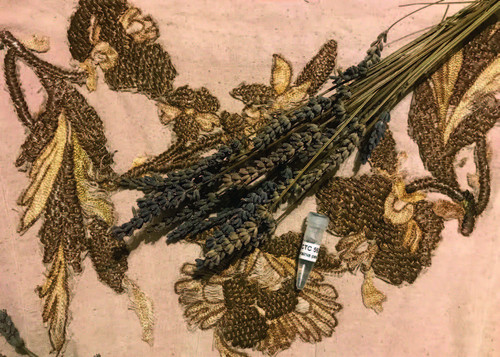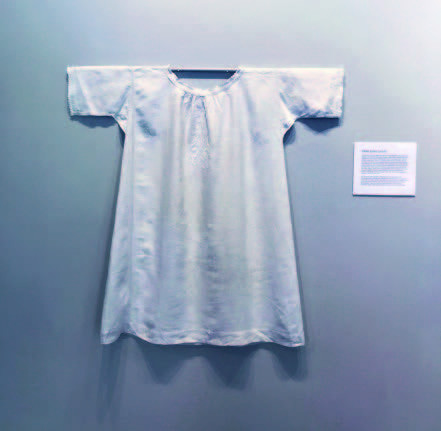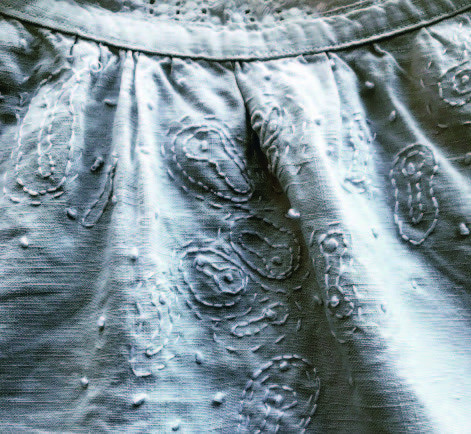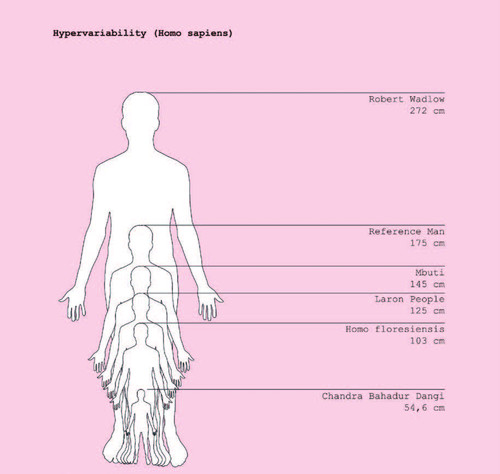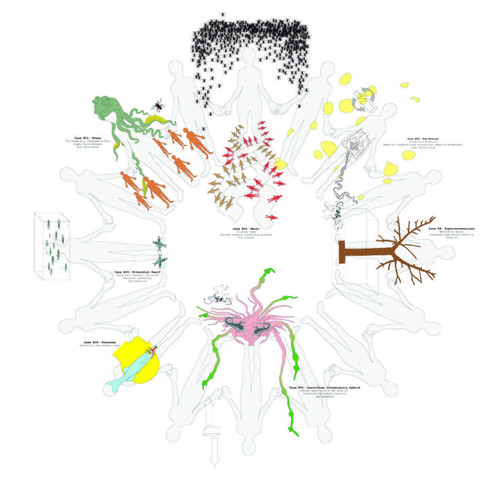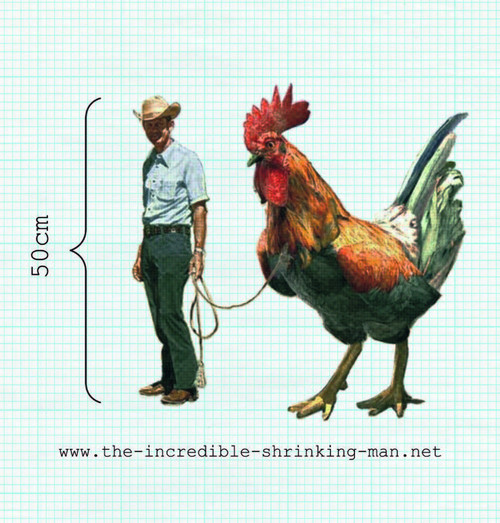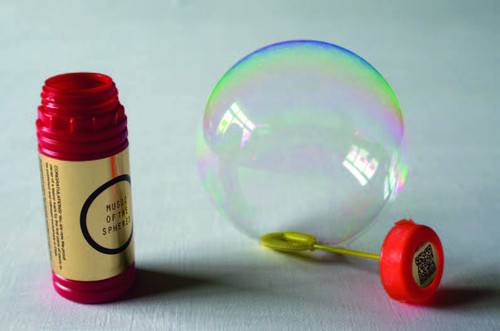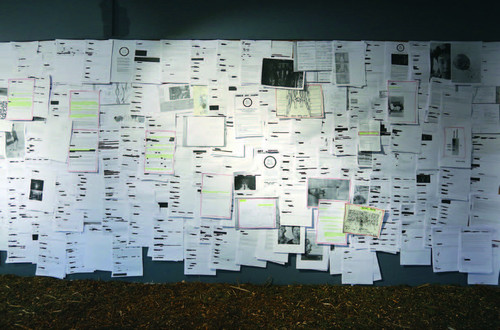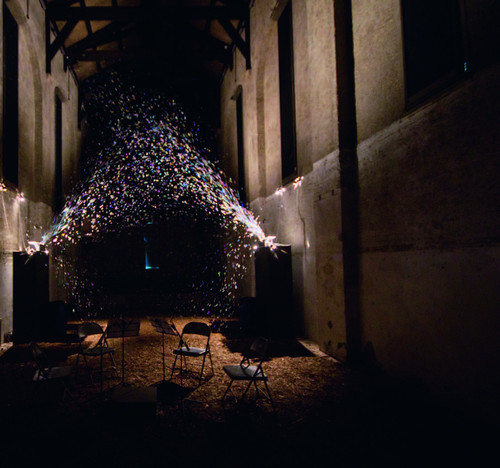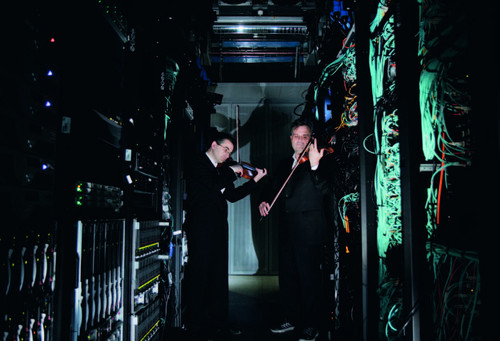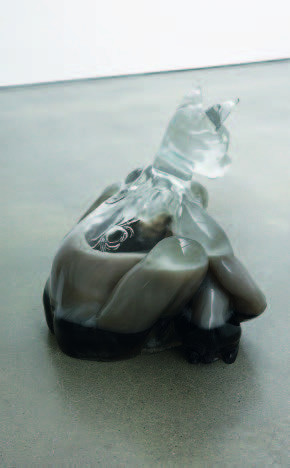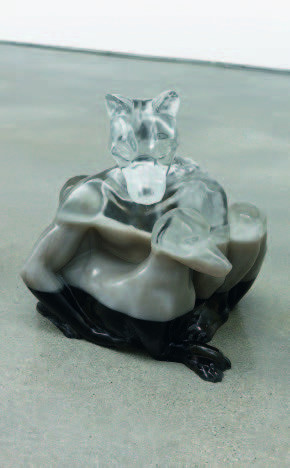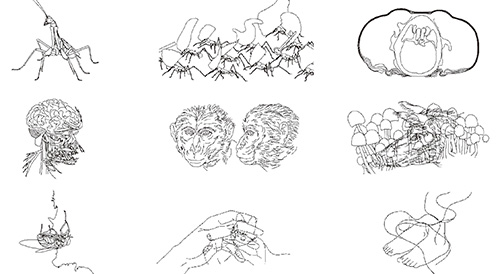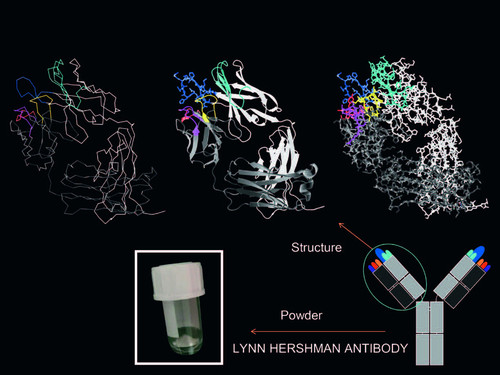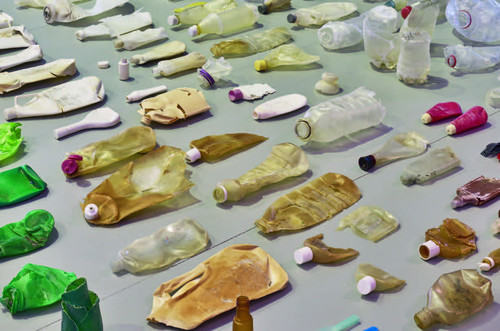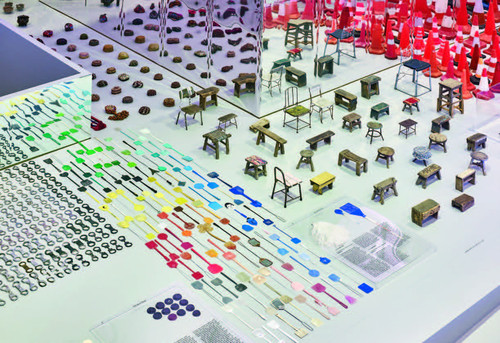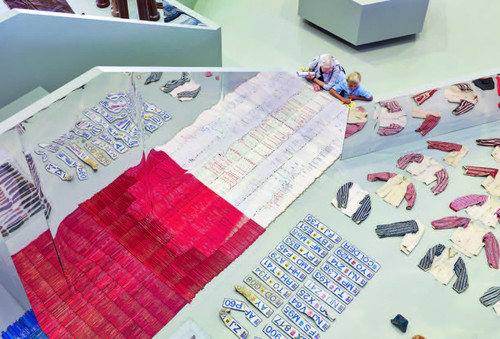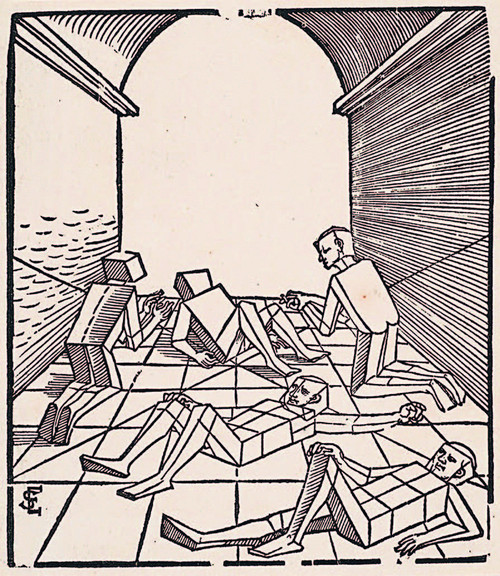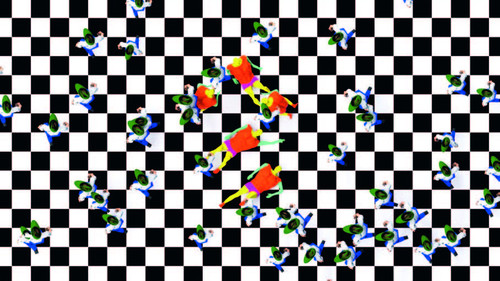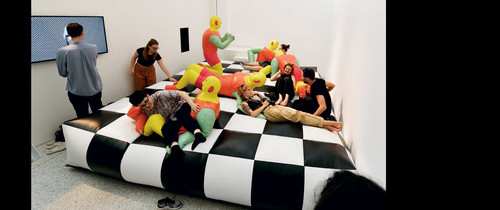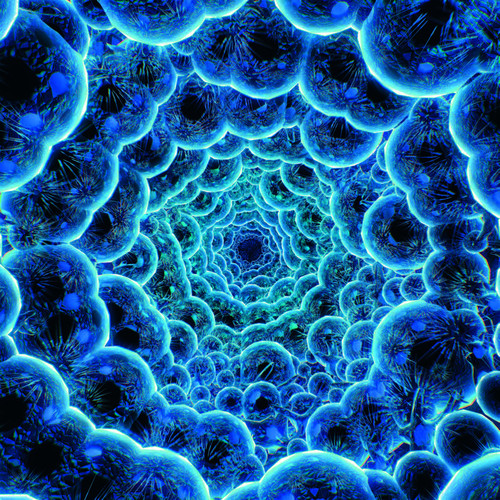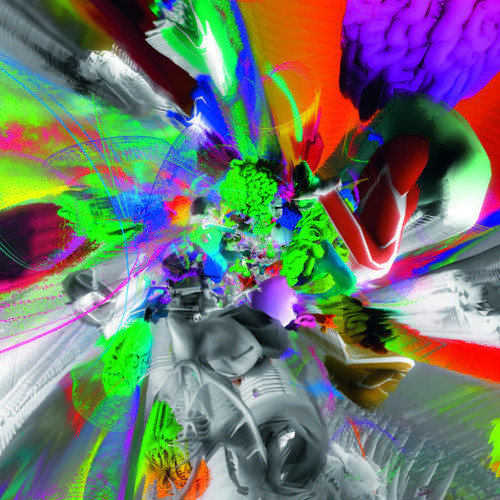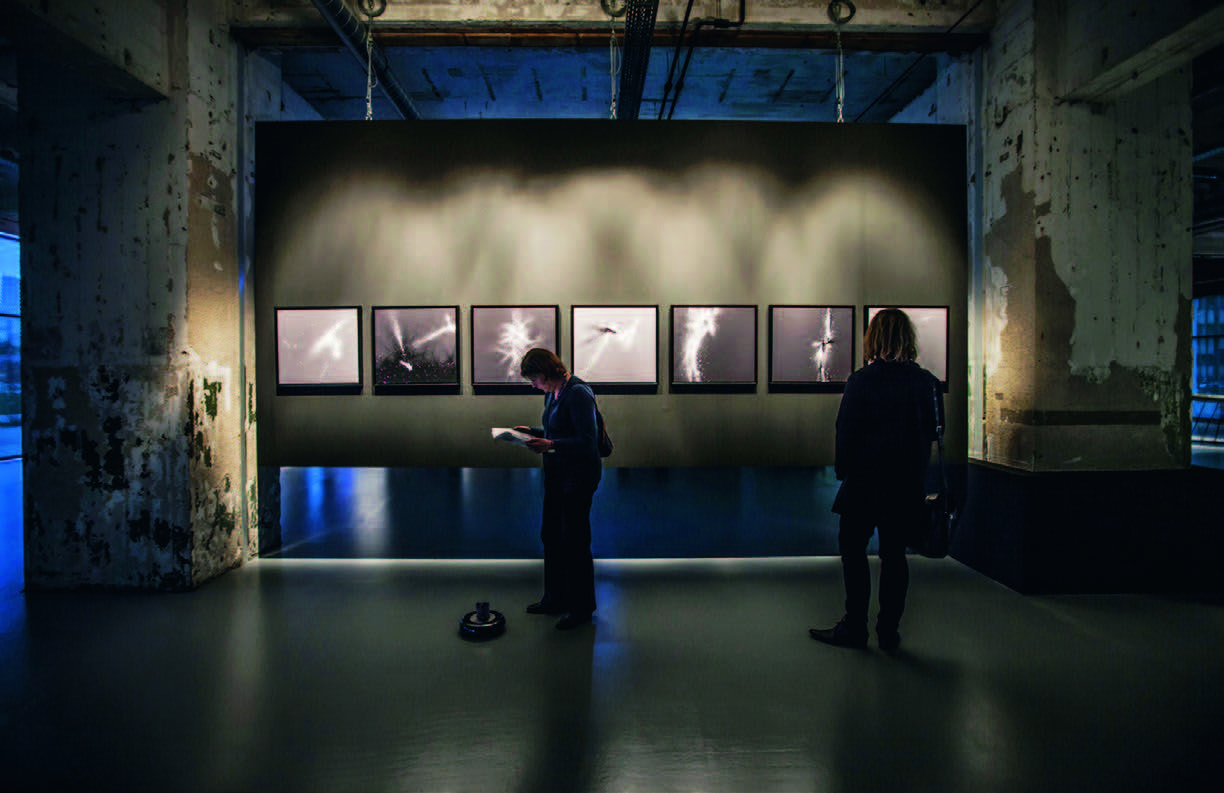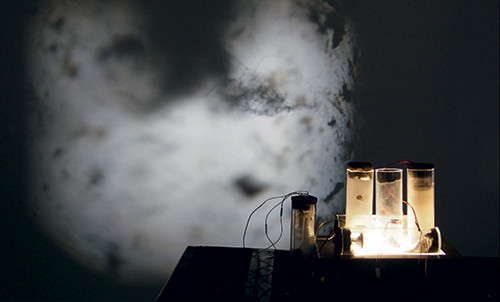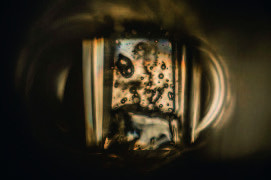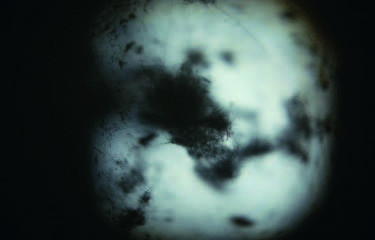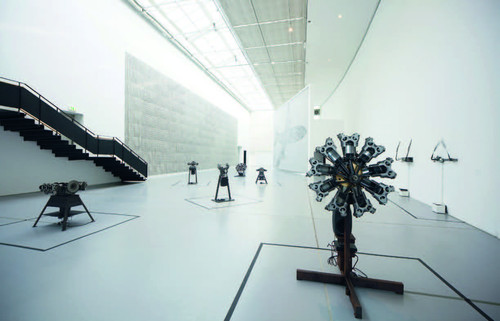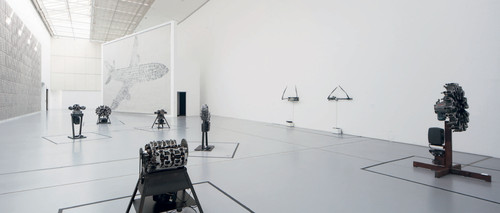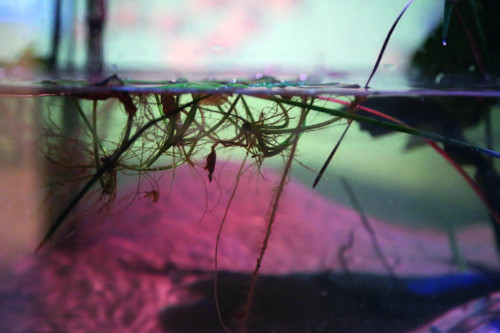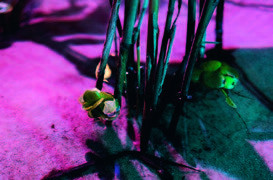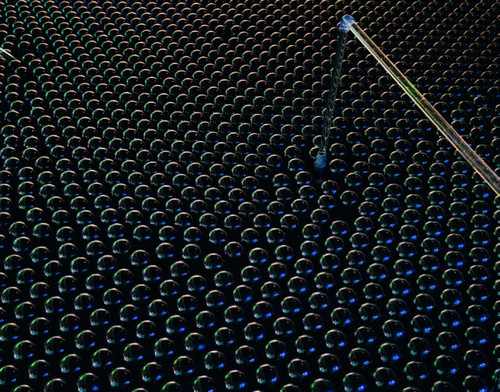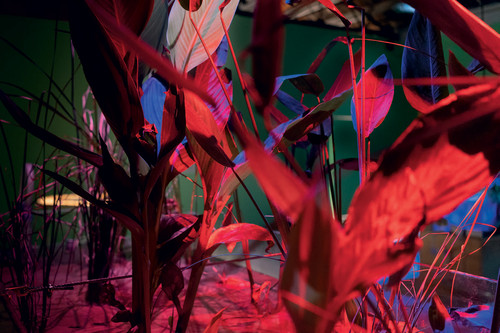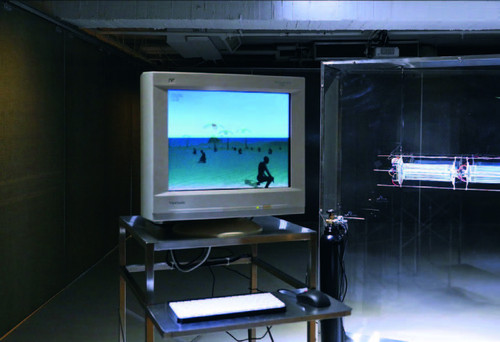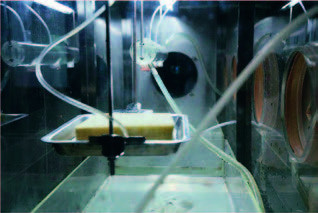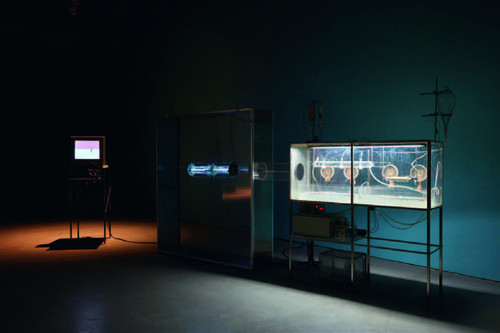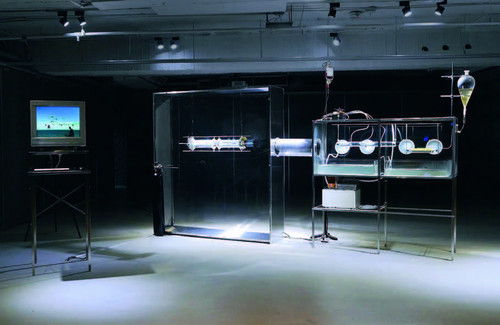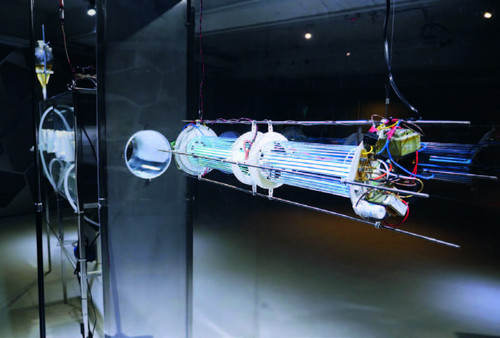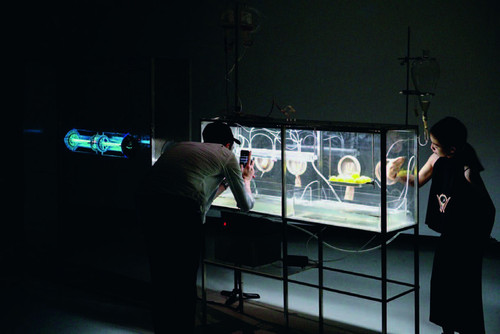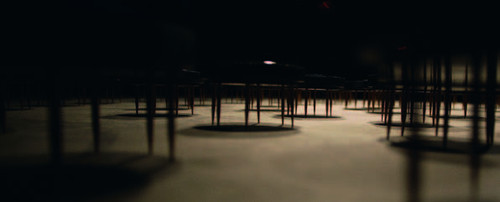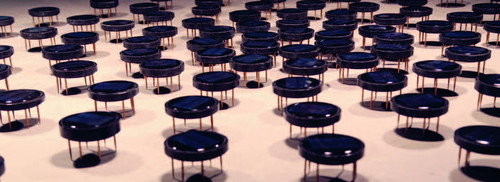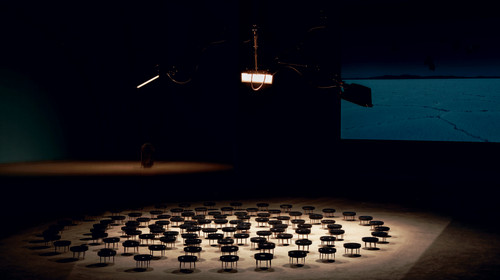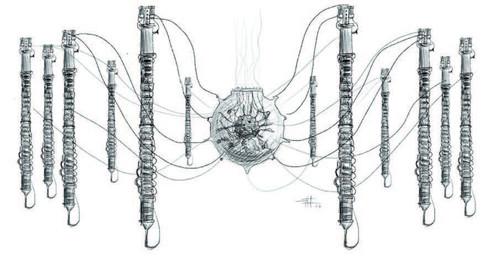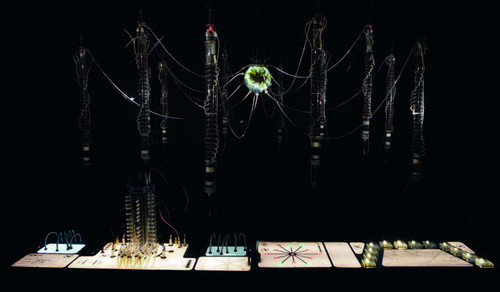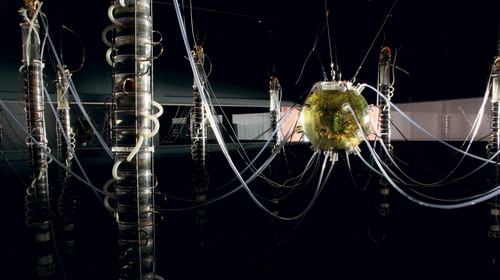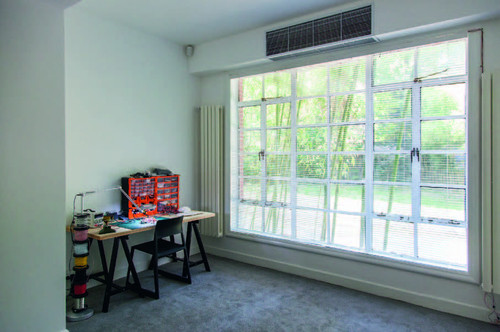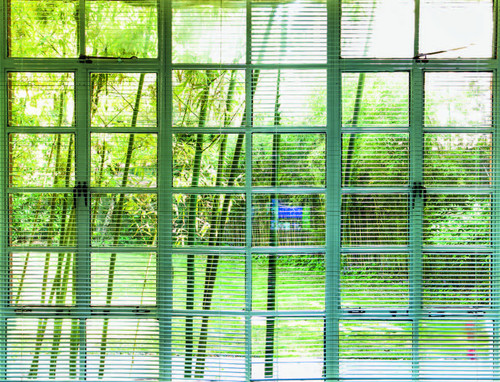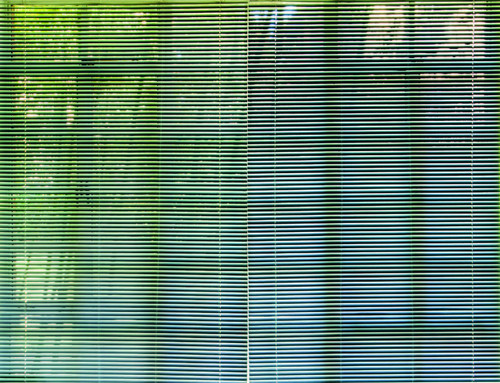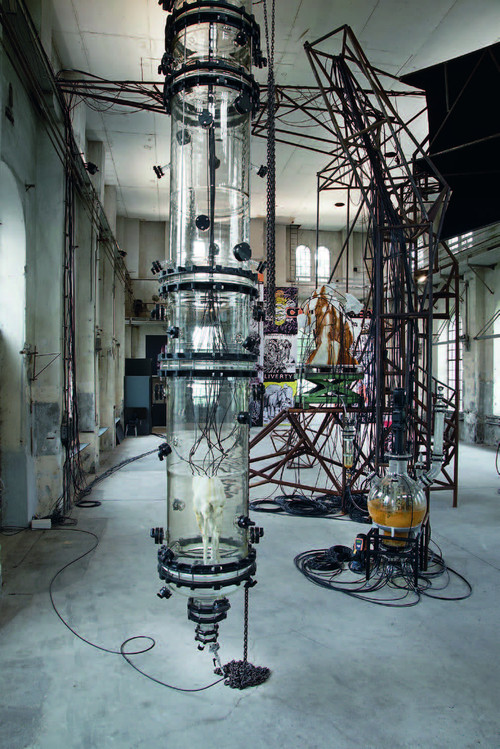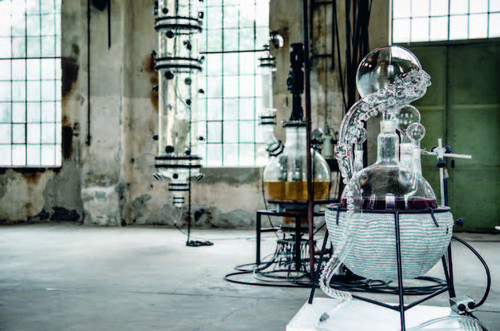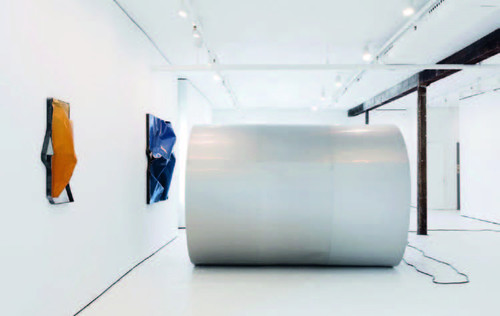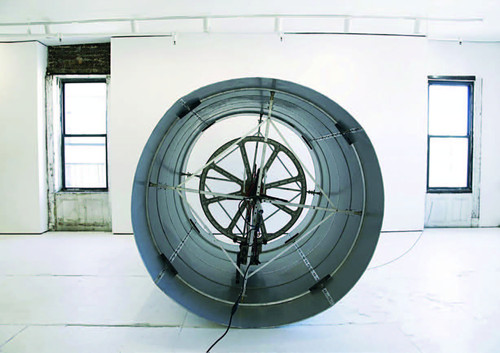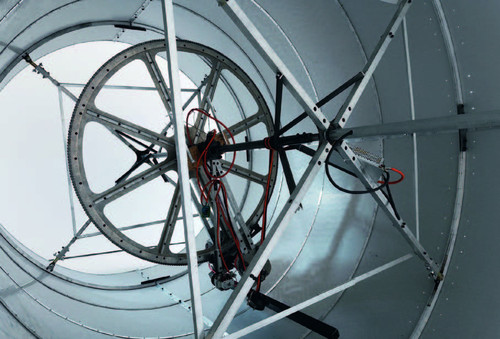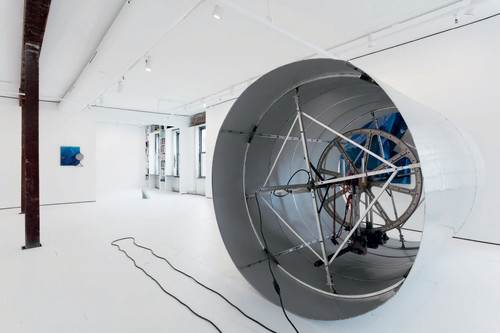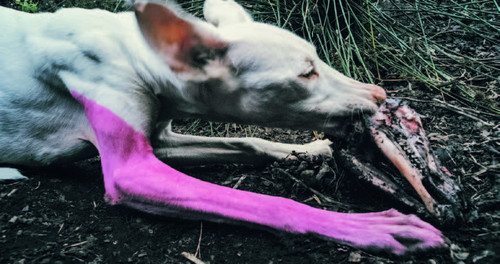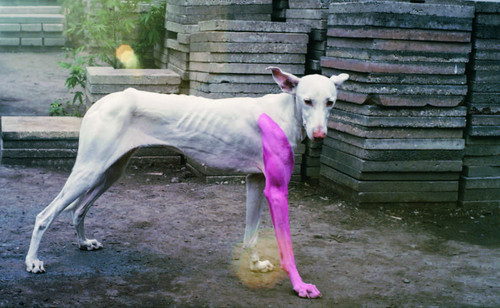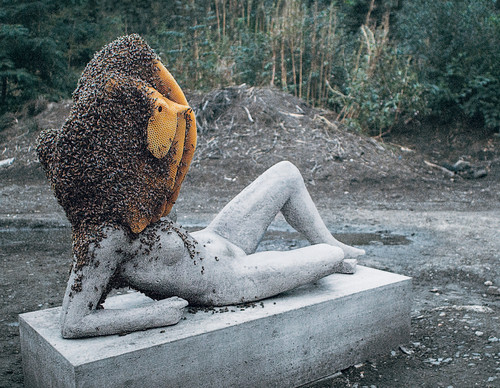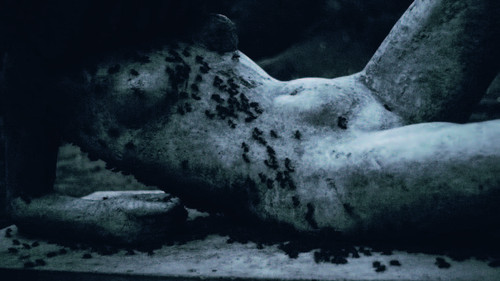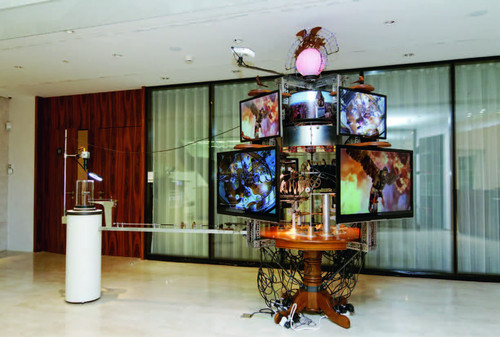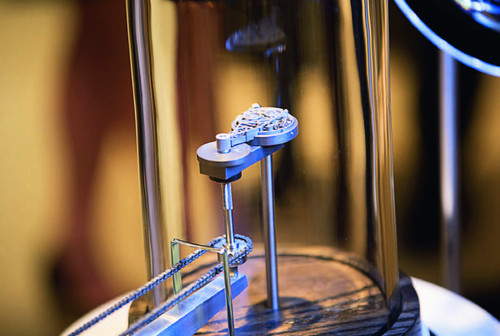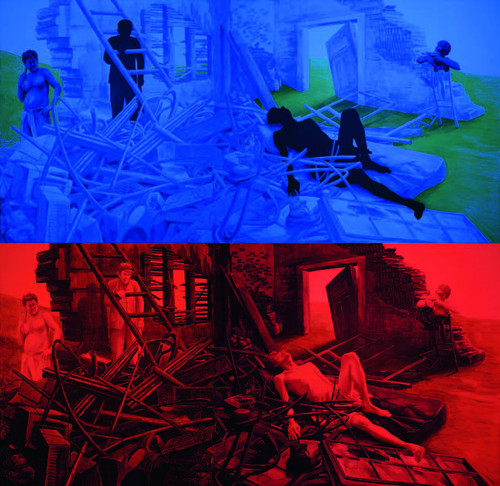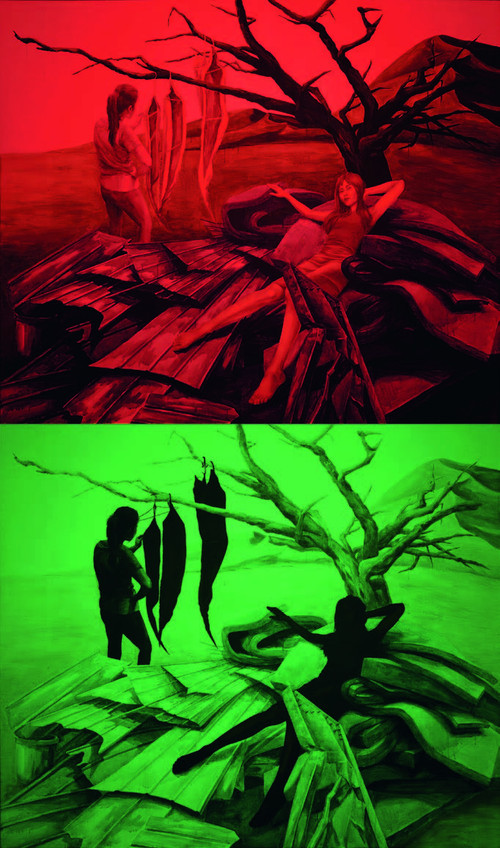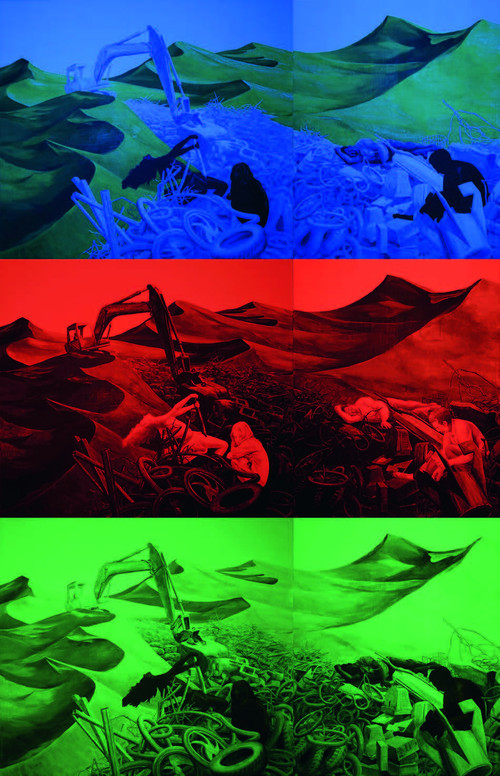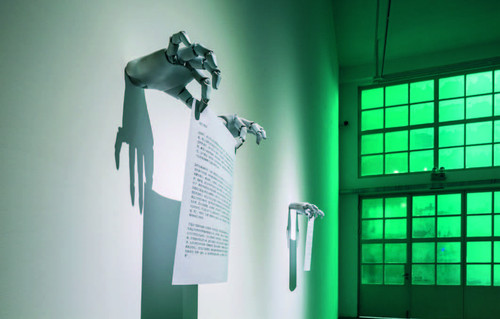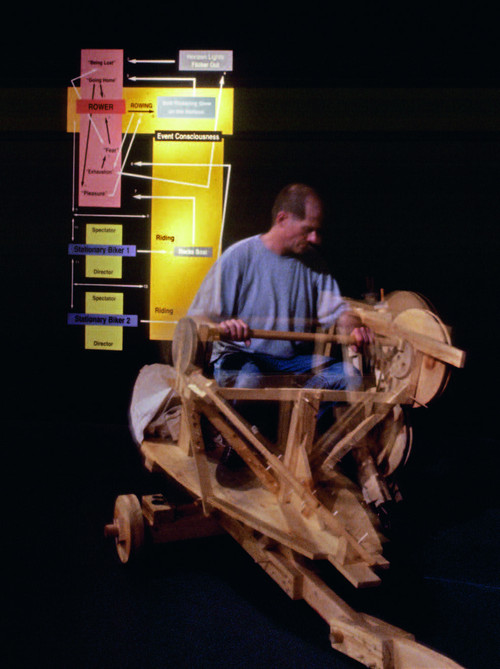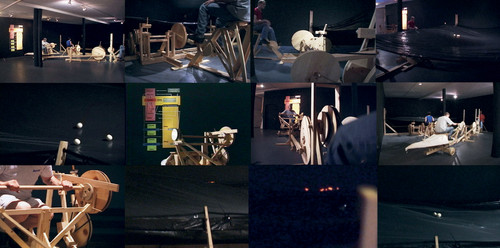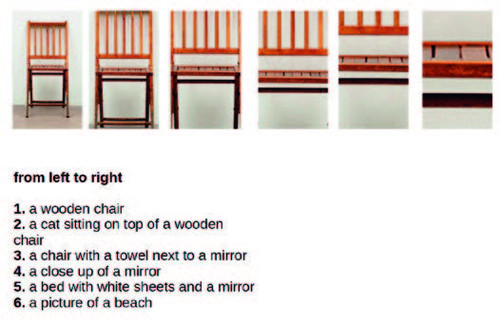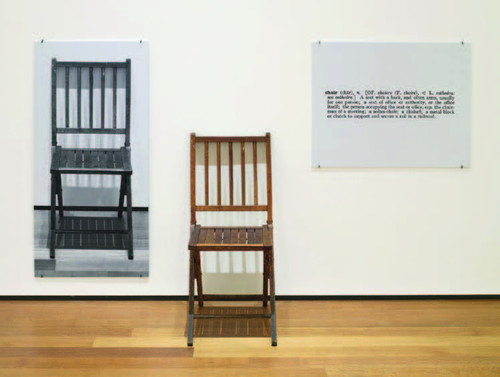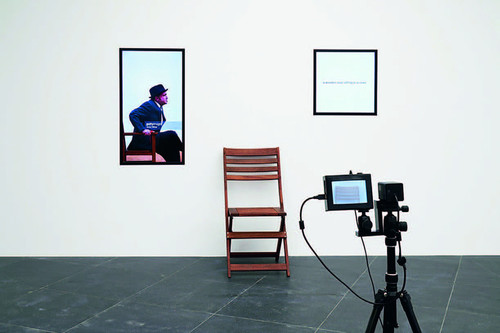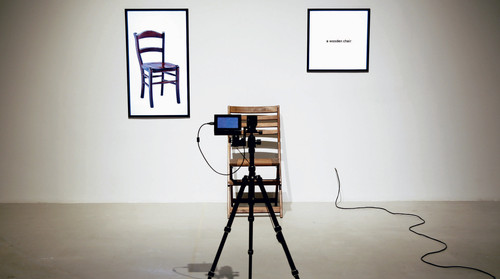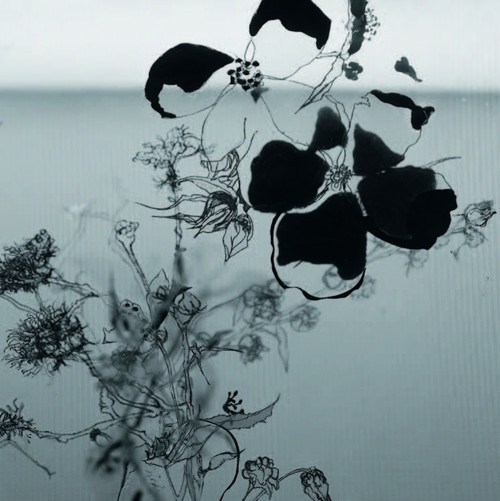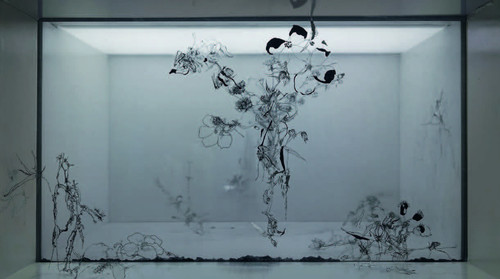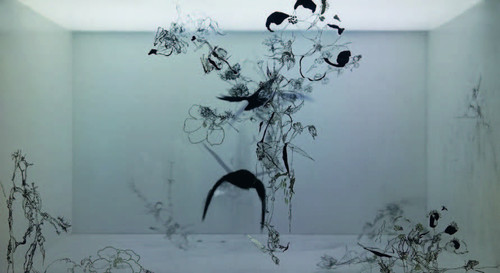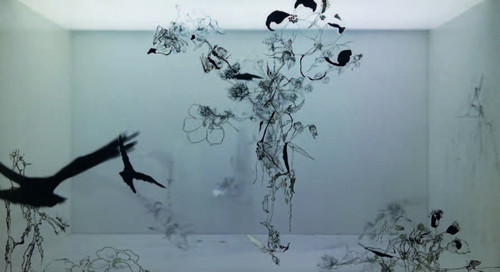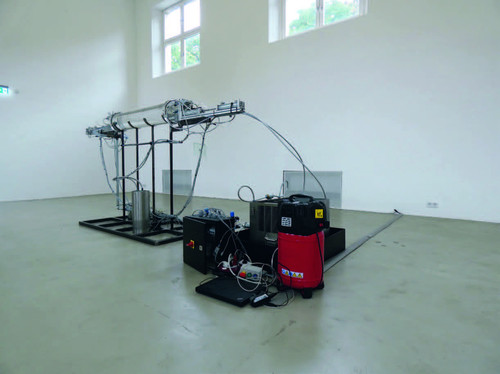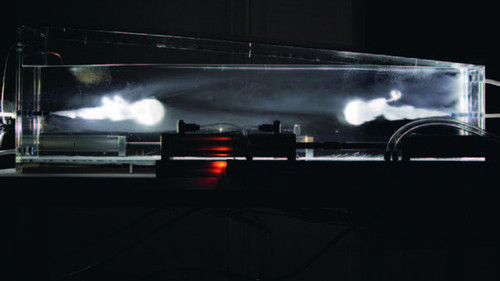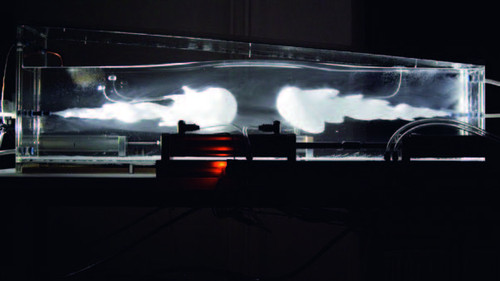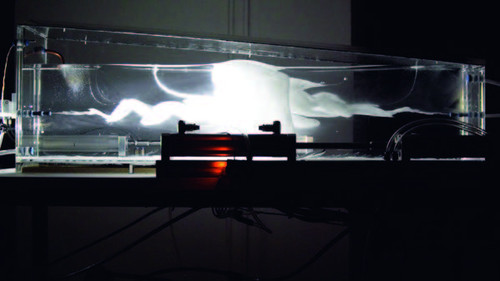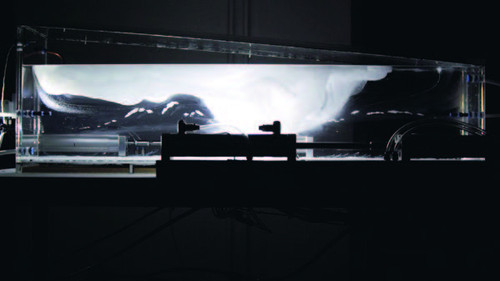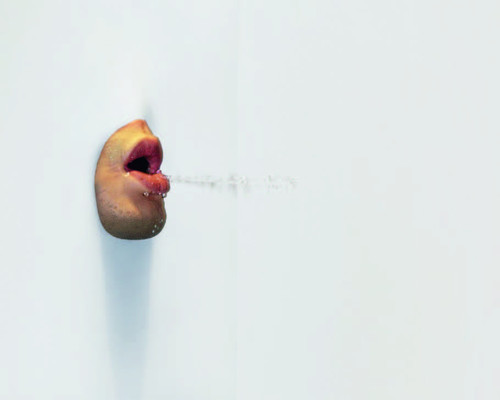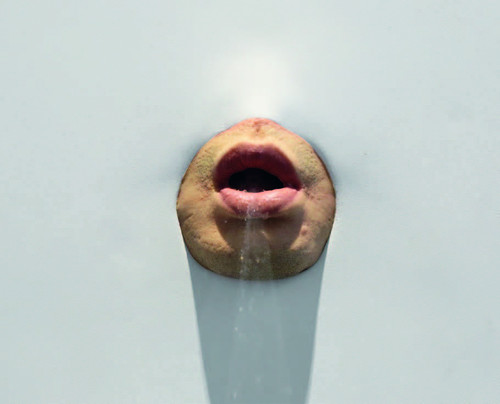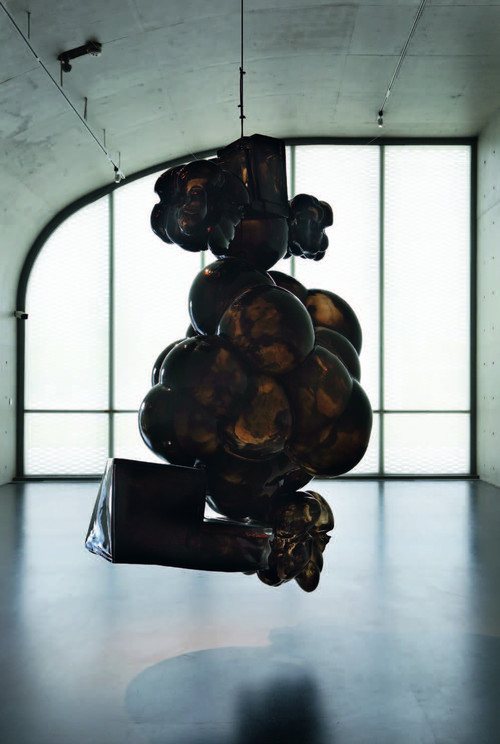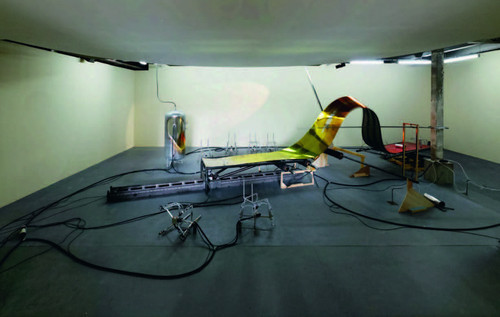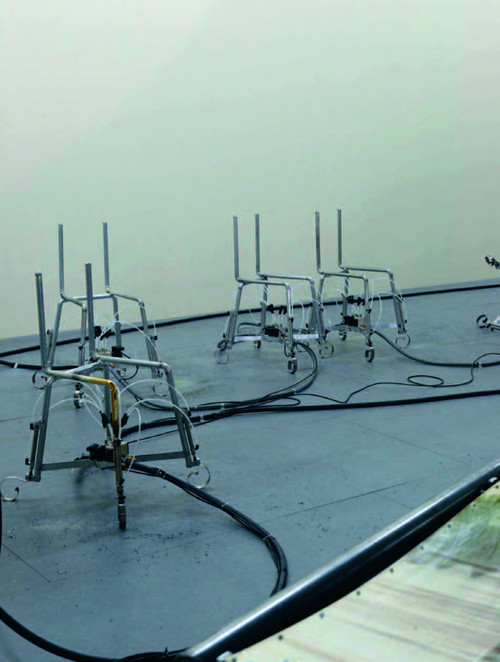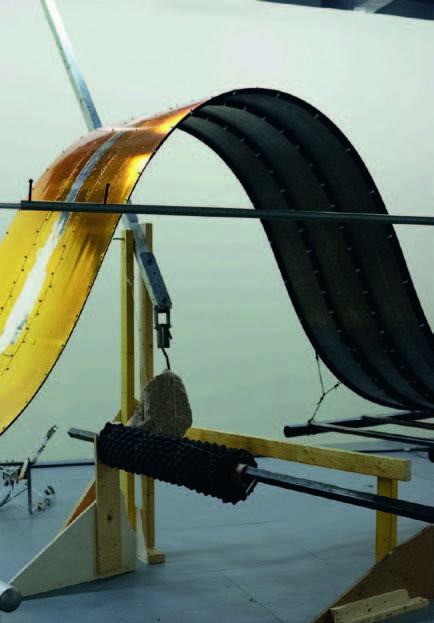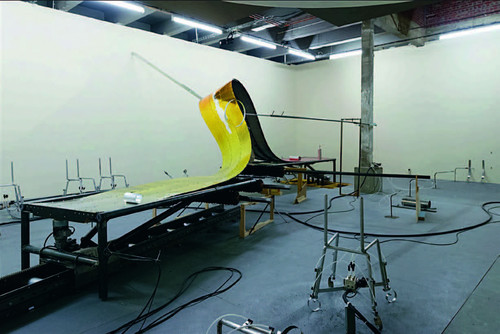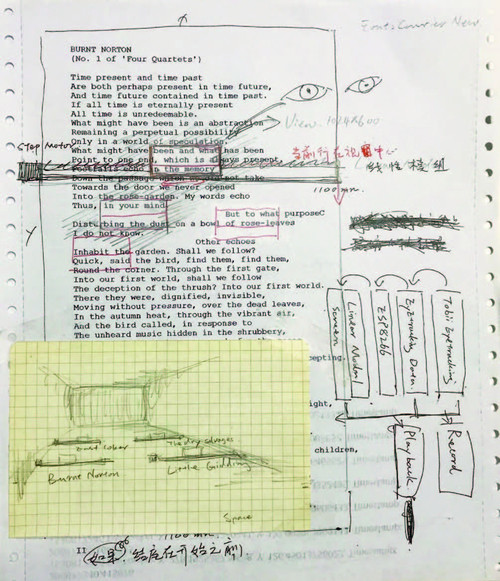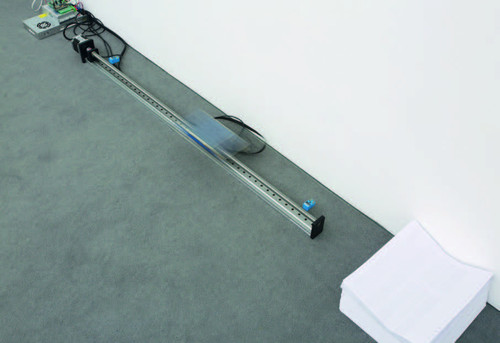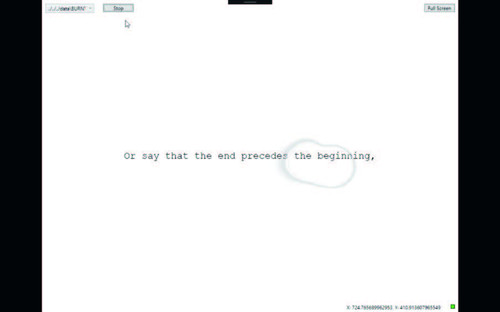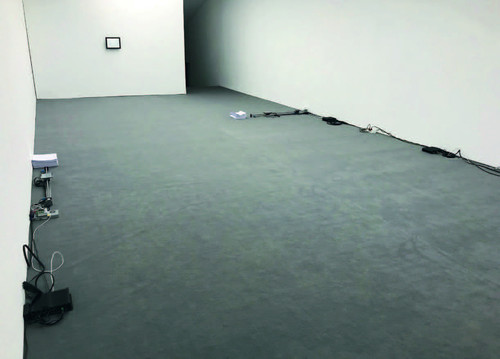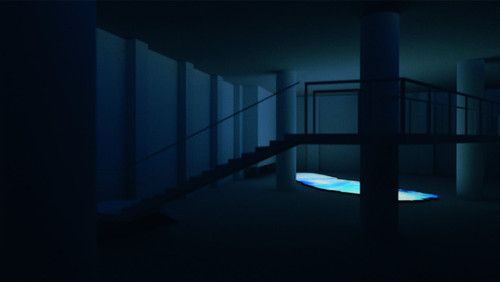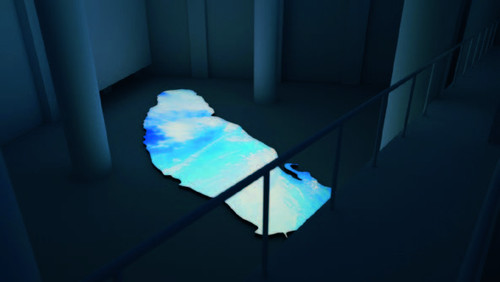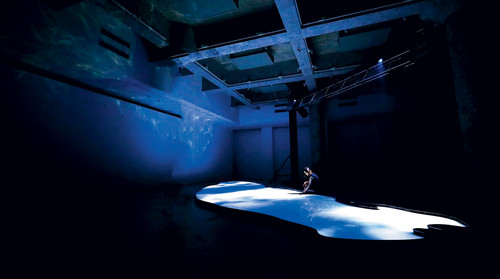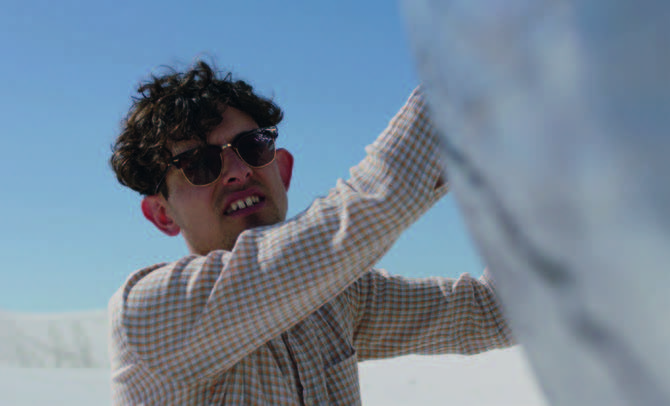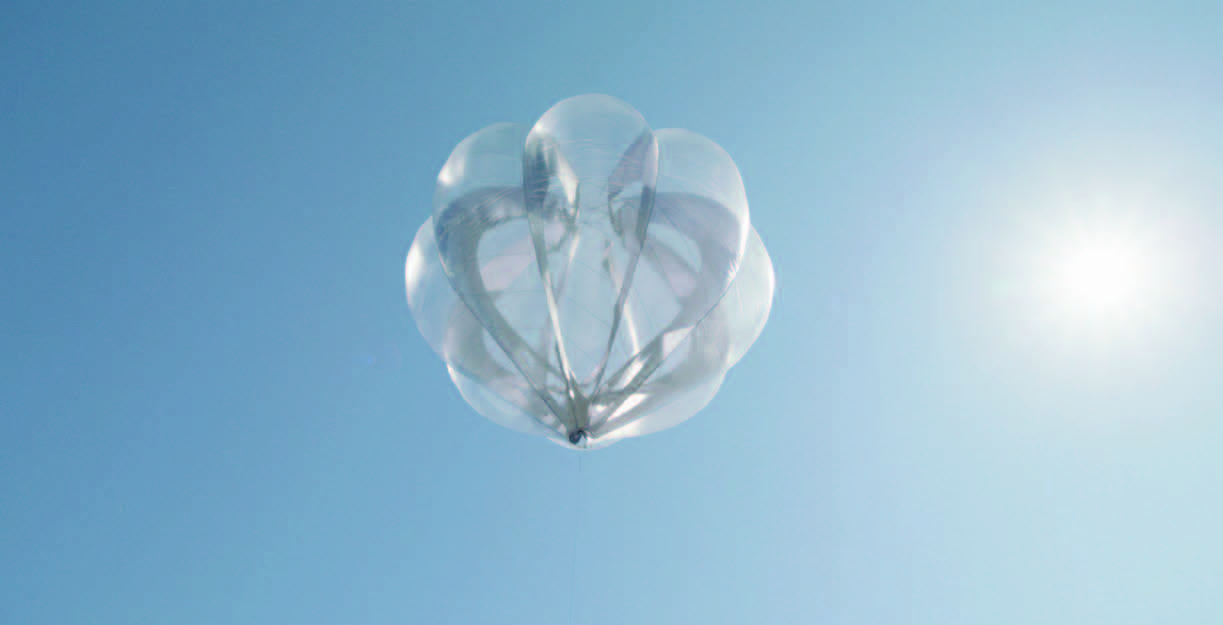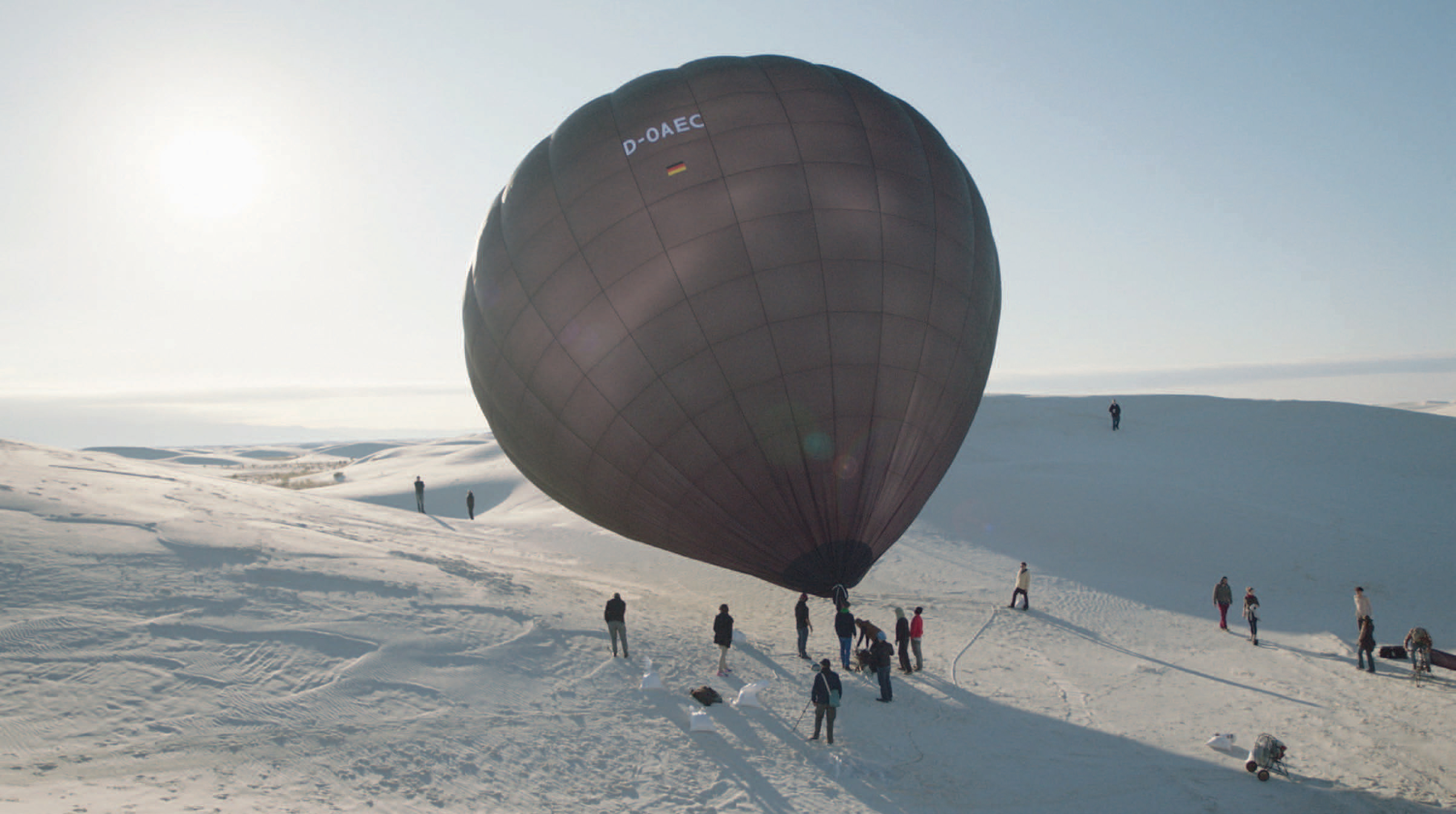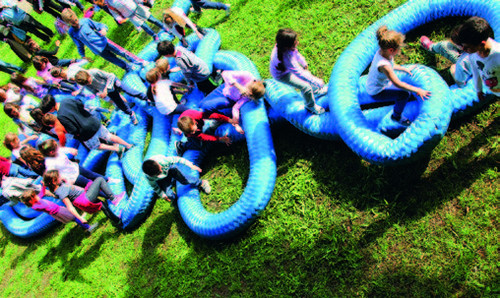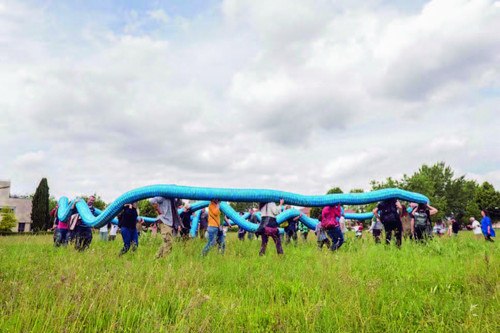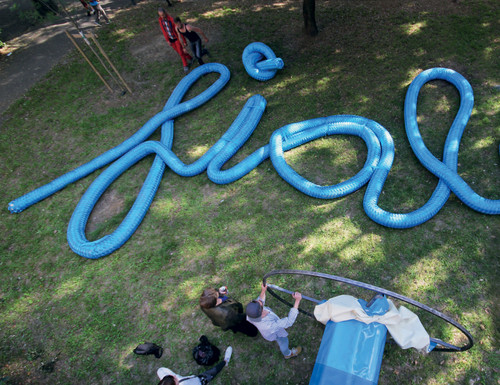The arguments mobilized here, indeed, that mobilize themselves here, do so in the service of what might be called a
"technological turn." I employ the contrived reflexivity of the syntagm "mobilize themselves" to emphasize the ineluctable
efect of a certain mechanicity or automaticity. What mobilizes itself in the technological turn is a function of something that
cannot but occur, has already occurred, occurs automatically, is itself already in the service of a machine. The technological
turn describes the turn into a technology that was always there. The technological turn, therefore, cannot but occur. And
cannot but occur as technological, for I will argue that the turn itself, the notion of the turn, implies a type of technologization.
It is in order to explain something beyond the apparent syllogistic tautology of all that that I develop what follows.
For reasons that should become apparent in the analyses presented here―both their ethico-political and rhetoricosexual
emphases, as well as the set of permutations of the same-I shall presume in the first instance to deal with a turn
that takes place with respect to the human as exemplar of the animate, to deal with a someone who turns. What turns will
be presumed to be something human, some human thing, and the argument will be that in turning it turns into something
technological, some technological thing. Therefore the turn is first of all an inflection, a bending, the movement of a limb
that, as the Latin teaches us, is the sense of articulation. Within that logic, there is technology as soon as there are limbs, as
soon as there is bending of those limbs, as soon as there is any articulation at all. As soon as there is articulation, the human
has rounded the technological bend, the technological turn has occurred, and there is no more simple human. Which, for
all intents and purposes, means there never was any simple human. I intend in the second instance that the technological
turn, as inflection or articulation, be understood to begin well before the emergence of a limb. Although it is the limb that
will determine the prospect of a relation to a tool, to what we call artifice in general, and so inaugurate and underwrite a
conception of a human or an animate that becomes technologized by entering into a prosthetic articulation with whatever
it fashions outside its own body, one might as well argue that the animate first articulates and so becomes technological in
the self-division of a cell, in the self-generation of an amoeba. Indeed, to the extent that the model of technology imposing
its epistemological preeminence in our times is less the mechanical and increasingly the biotechnological, we should think
technology beyond the confines of a traditional concept of a human-mechanical relation, as developmentally upstream from
the articulation of a limb. We should think of a technology that grows, and of the bios in general as following the technological
turn, as bending outside itself deep within itself.
For now, still figuring things according to the model of the human animal, of human animal articulation, as the
articulation of limbs of a human biped, the turn would be the deviation that occurs–naturally, as it were–within the
seemingly automatic advance of ambulation or locomotion. It turns as it walks. Technology as mechanicity is located–
not for the first time but in a particularly explicit way, that is to say, as fundamental relation to the earth as exteriority–in
the step. In walking, one, the human, any given biped, is with each step correcting its bearing, limping from one foot to the
other, realigning its center of gravity, compensating for the disequilibrium of each movement, as it were turning one way
then the other in order to advance. The particular importance of the privilege I am giving to the turn resides, therefore, in
its sense of a departure that is also a detour, a deviation, a divergence into difference. We will imagine the human turning as
it walks, deviating from its forward path in order, precisely, to move forward, advancing necessarily askew. To repeat: the
turn is the deviation from itself by means of which the human, in being or "moving" simply human, is understood to become
technological. And such a turn begins as soon as there is understood to be any human. The human is, from the point of view
of this turn, understood to become technological as soon as it becomes human, to be always already turning that way. For
reasons that I will progressively enumerate and return to throughout the book, the "that way" of the turn will be interpreted, or
work itself out, as a turning back, a turning to the back. Even if in turning one (the human) deviates from itself in the simplest
or most minimal fashion, turns just a little to the left or right–say to correct its bearing–it turns, for all intents and purposes,
toward the back. For my purposes and according to my interpretation, every deviation is a form of retroversion. This means
that every turn is a type of turning around, movement toward the back, toward what is behind; in turning however gently to
the right or to the left, indeed up or down, one is on the way toward the back. Any bending is a type of falling, or folding
back, upon itself, with respect to itself. Any departure, however slight, from a pure and strict (and necessarily impossible to
define) forward linearity makes reference to what is behind, raises that question, infects as it were that strict forward linearity
of movement with a decelerating pull from behind and so implies or calls for a thinking of what is behind, a thinking of the
back. Hence, as my title suggests, the turn I will deal with is a type of turning around or turning back, a turning from the back
or from behind, a dorsal turn, a turning to or into dorsality. Dorsality will be a name for that which, from behind, from or in
the back of the human, turns (it) into something technological, some technological thing.
In the first place, interpreting the technological turn in terms of the back, as dorsal, serves to emphasize the originary
status of that turn: the human, in moving forward, in order to move forward, turns back to, and turns behind to, acknowledge
the technological origin I have just been referring to. At a moment in which the human appears to be moving inexorably
forward toward a biotechnological future, it is strategically important to recognize–to be cognizant in return of–the fact
of a relation between bios and tekhne so complex and so historic that any presumption of the priority of one over the other
can be sustained only by means of an appeal to a metaphysics of creation. I say "a metaphysics of creation" rather than a myth
or even the concept of creation, which, by definition, cannot avoid the sense of artifice. Whereas creation is obviously
artifice, a metaphysics of creation presumes a creation devoid of such contrivance and presumes to resolve the paradox
of a divine and "natural" tekhne that would have preceded the bios. However, it is likely that rationalist or noncreationist
descriptions of the evolutionary process are having unconscious recourse to another side of the same presumption whenever
they privilege the organic to the extent of failing to acknowledge the becoming-technological of biological self-organization
or self-programmation, whenever they ignore the originary mechanics at work in the evolution of the species. This is not to
replace the organic with the mechanical but to argue against any rigorous purity of either. Making the case for an originary
biotechnology would be an urgent imperative, prerequisite to a reconfiguration of the current terms of debate over the
integrity of the human that so often has us paralyzed with anxiety at the prospect of our increasingly bioengineered future.
Appeals to the integrity of the human, and the concomitant anxiety over presumed incursions of the machine within the
human, are hardly limited to simplistic creationisms but can be found underpinning commonplace as well as philosophical
conceptions of, to begin with, life and death, and they consistently provide the bases for ethical thinking in general. Indeed,
how could we begin to conceive of an ethics of the mechanical? Ethical behavior, political "choice," free will, agency, indeed,
the human itself are for us, by definition, representative of what breaks with mechanicity, automatism, or programmation.
Yet, according to my argument, the human breaks, or turns at the same time, into mechanicity, into automatism and
programmation. Hence I am not suggesting that we wholeheartedly endorse every biotechnological possibility, or that we stop
resisting the presumptive assurance of a science that conceives of itself necessarily as human progress, especially when that
science is increasingly employed in the service of an increasingly militarized commerce, or that we fail to engage in juridical
attempts to wrestle with categories that are no longer adequate to the questions raised by certain conceptual quandaries,
beginning with the issues of life and death or, for example, euthanasia, cloning, biodiversity, et cetera, but rather that we
attempt to think it otherwise, that we investigate what shifts of terrain might occur once we take the technological turn back to
a place behind where we traditionally presume it to have taken place, turning back around behind us from the start.
It also follows from what I have just outlined that the dorsal turn operates as a form, or forms, of resistance–what I
shall later analyze as "dissidence"–resistance precisely to a technology that defines itself as straight-forward, as straight and
forward, straight-ahead linear advance, the totally concentrated confidence and pure technological fiat of an unwavering
lift-off propelled by naked combustible force. We should reserve the right to hold back, not to presume that every technology
is an advance. But we should at the same time remember the converse conservatism of the champions of unbridled progress,
since their ideal and unstoppable technological force is presumed to be mustered and mastered by the human, to operate in
the service of human will. That form of technicism or technologism would necessarily be the most powerful defender of the
faith of the pretechnological integral human that discovers and controls everything it produces. Against it, we should maintain
the dorsal chance, the dorsal as the chance of what cannot be foreseen, the surprise or accident that appears, at least, to come
from behind, from out of range or outside the field of vision, challenging that technocratic faith or confidence and calling
into question its control.
What comes from behind comes from beyond the simple perspective of the human and hence, from the point of view
of perspective and of vision in general, it comes from another point of view, from outside the field of visual possibility.
For the human, that means from behind. Although the human cannot necessarily see everything that comes from in front,
it necessarily cannot see anything that comes from behind, or at least not short of a turn. Although it by no means controls
the field of the frontal–for example, what is lateral and liminal–the dorsal necessarily escapes it. Now, the sense of a
technology that comes from behind the human, unable to be seen or foreseen, would appear to contradict the definition
of the technological as production or creation, as fabrication produced by hands manipulating matter within a visible field.
What would be the meaning of a technology that the human had not produced in front of itself and in view of itself? It would
mean first of all taking conceptual account of a technology whose effects exceed the strict conditions of its production, a
technology that proliferates or mutates as the viral life that–for example, in information technologies–is the form and name
it actually borrows. But more than that, it would mean again taking conceptual account of the extent to which, in increasingly
explicit ways, technology defines and redefines the human and does so downstream from the point at which a given
technological creation was brought into effect. It would therefore mean turning to see the technology of the human itself,
inside itself, if you wish, in any case inaccessible or invisible from the perspective of an integral human gathered within its
neatly prescribed limits or borders and gazing ahead into a controlled exteriority of the artifact.
A technology of the human itself, a technology that defines and so produces the human, cannot be part of the human
self-image; it comes at the human from behind, is already at its back. Or indeed, in its back. The dorsal turn also refers,
therefore, to the role played by the vertebral column in the constitution of the human. The figure or pose of our fundamental
technological articulation and actualization–the point at which that emerges into visibility–is the upright stance.
Anthropological accounts of the emergence of anthropoid species understandably have consistent recourse to that event, to a
bending of the spine by straightening it, as a defining factor for the human. The discovery in 1959 of the Zinjanthropus fossil,
along with his tools, meant that the criteria for hominization could be ascribed to a much earlier genus, the Australopithecus,
than was previously thought. According to André Leroi-Gourhan, that genus was characterized by a relation between, on
the one hand, the capacity for a widening cortical pan that results from a rebalancing of skull and jaw in the upright stance,
and, on the other hand, the ability to split pebbles. The Australopithecus is the earliest known example of a brain freed from
the suspension stresses of the skull, and although his brain, unlike his body, has hardly developed in comparison with the
Neanderthal and beyond, he has begun making tools.
As Leroi-Gourhan describes it, it is as if "we" simultaneously made room for more brain, relieved that brain of some
of its physical pressure, and freed our hands so as to be able to split pebbles on the way to producing tools; as if in standing
upright the simian turned anthropoid and, in so doing, immediately turned technological. Leroi-Gourhan defines the
human in terms of a technicity so fundamental as to be almost "zoological," as if an almost automatic technological outgrowth
of the body occurred once the hand was freed from its motor function and once the face shortened and became independent
of the cerebral part of the skull. He refers to the concept of tools as "a 'secretion' of the anthropoid's body and brain" such that
"the Australanthropians … seem to have possessed their tools in much the same way as an animal has claws…as if their brains
and their bodies had gradually exuded them…chopper and biface [tools] seem to form part of the skeleton, to be literally
'incorporated' in the living organism."
There seems little doubt that a fundamental realignment of the human in its relation to technology occurs with the
upright stance. The anthropoid "chooses" to give itself the prospect of tools and at the same time turns its back in a radical
way on whatever is behind it. We know how it abandons the animal, refines the senses by downgrading smell and hearing,
and reconfigures the knowable other within a frontal visual perspective, prioritizing a certain version of the fore-seen or
fore-seeable. What is produced by that anthropoid, the technologies of tool use on the one hand, and language on the
other, is henceforth presumed to occur within that frontal visual perspective of the knowable. That occurs in spite of the
emphasis given, in terms of those technologies, to the surprise of discovery and of invention. Such discovery and invention
are henceforth and consistently understood as being ahead, around the corner, or on the horizon of a forward progression.
What is therefore being forgotten, I argue–perhaps until it is, or unless it be reawakened in the fear of some bioengineered
monstrosity, some retroviral haunting–is the extent to which technology is, to begin with, literally in the back. It is in the
human back as the spinal–or can we already say dorsal?–turn or adjustment, the primary or primal vertebral articulation
that frees the hands to pick up stones and fashion tools, that redistributes the weight of the head and jaw to allow the brain
to develop and the tongue to speak. From and in its beginning, back where it began, the human is therefore receiving a
definition from a technologization of the body, in a becoming-prosthesis or a becoming-dorsal.
The dorsal turn refers, in the fourth place, to operations of reversal or reversibility as a fact of technology. This is most
obvious in machine technology, where the basic articulation of, say, piston and connecting rod, implies an indifference
concerning the direction in which the wheel is turned, forward or back. Now, that translates in the first instance to an
indifference regarding spatial orientation: the machine is essentially always a spacecraft. The tool, for example, aspires to
the conquest of outer space in the most literal sense of all those words by redefining our relation to what is outside us, our
conceptions of the proximate and distant.With the development of industrial machinery, that spatial relation will come to
be more explicitly defined by speed, by a space-time relation that overwhelmingly implies forward motion, for we are not
used to thinking speed in terms of reverse motion. But when it comes to the human machine, to technology in and of the
space of the human (back), directional "indifference" comes back into play as a function of time, conceptions of soon and
later, present and future. The relation to technology is, in more ways than have already been suggested, a complicated–
even reversible or indifferent–relation to time. I shall discuss in the next chapter how that is brought into focus, and how
technology thereby comes into perhaps unexpected focus, with respect to Being in the work of Heidegger. But for now let
me emphasize that the invention of the technological relates to the past as much as to the future in this particular sense: it is a
relation to past time and to the function of memory.
As readily as one accepts the status of artistic creation, as a paradigm for human production, in terms of a terrestrial
afterlife–the desire to leave something behind–so might we insist that the artifact functions as archive and memory bank.
And the same might be said of technological invention in general, for, as has often been pointed out, the word tekhne was
used in Greek as much for what was produced as art as what was manufactured; it stands for the artisanal all the way from
art to industry. Although the relation to memory and to archivation might not be immediately apparent in the case of a
rudimentary tool, it can be understood that whatever is produced as nonorganic or "nonbiodegradable" remainder will
necessarily constitute some form of memorial trace. And it is an obvious fact that artifactual technologies such as language,
especially via writing, consist precisely in what Bernard Stiegler refers to as the exteriorization of memory, and that the
contemporary technologies of information amount to a veritable "industrialization of memory." If technology is a matter of
exteriorization, of the human reaching outside itself (but, as was argued regarding corticalization and the upright stance, in a
way that calls into question the integrity of any interiority), then it is also a matter of archivation: what is created outside the
human remains as a matter of record and increasingly becomes the very record or archive, the artificial or exterior memory
itself. The production of an artifact is the production of an archive; it means depositing in the present–in some "present"–
an object, which, as it inserts and catalogs itself in the past, will become available for a future retrieval.
In reaching outside itself, the human therefore reaches both forward and back; in seeming to turn away from the past, it
leaves the artificial trace that will have it forever referring back to that constructed past as the trace of its memory, as promise
of artificial memory and promise or threat, eventually, of artificial intelligence. Memory might be called, after all, the first
artificial intelligence, and it comes to be recognized explicitly as such once Freud discovers the unconscious like some selfproduced
biochip that controls (and derails), as if from behind, the conscious. The life of memory, its status as alive or dead,
internal or external, real or artificial, draws the fault line along which the question of technology is still debated, from the
desirability of "replacing" mental functions by machines (oral histories by writing, arithmetic by calculators, spelling by word
processors, to begin with) all the way to nanoscientific cerebral implants and the manipulation of genetic memory systems.
Thus although the machine institutes a law of order that is like the artificial or artifactual version of life itself, a principle
of creation or production to parallel organic regeneration–artists and artisans create inanimate "offspring," objects can
be reproduced like the burgeoning spores of nature–it remains indifferent to that order, as it were unmotivated by it.
That indifference derives from repetition itself, from repetition as automatism. It is the necessary structural possibility for
memory, which is by definition a repetition designed to function automatically, to be "triggered," and to disrupt the forward
momentum of time, perhaps simply interrupting the present by means of a single recollection, but potentially setting o a
chain reaction of memories that multiply in reverse order. It is in terms of the disruptive repetition performed by memory
that we can perhaps begin to understand a contrast between the reversibility inherent in machine technology and the more
radical conquest of time that takes place in biotechnology, in a genetic engineering that disrupts the temporality not only
of re-production but of generation itself. As I discuss in chapters 6 and 7, that technological disruption of temporality is
what conditions the political as motor of change, and what provides the terms of reference and argues for a type of retro-or
controversion as political strategy.
In its guise of the technological, the dorsal therefore names, in a number of ways, what comes from behind to inhabit
us as something other, some other thing, the other; an other beyond what can be conceived of within the perspective of our
frontal relations. Not just an enemy, a wild animal, an avalanche, falling rock, or speeding train, and indeed not necessarily
in the form of a threat–as we shall see, it could as easily be a caress–but also and even the known other to the extent that we
allow it to fall back into the shadow, into the space of a type of faith or trust, of what is behind us. From that point of view, the
dorsal might come to serve as the basis for an ethics beyond the programmable that would nevertheless function as an ethics
of or for the technological, however counterintuitive that might seem. Not an ethics dictated by technology, or the nonsense
of an ethics of the machine, but rather an ethics that takes account of the machine in the human, that deals with the form of
unassimilable inanimation that inhabits the back of the human, an unassimilable otherness that participates in its functioning
and so precisely yet paradoxically prevents its acting and responding from the presumption of what can be foreseen.
Throughout the discussions and analyses that follow, I will try to point to the dorsal formations of such an ethics, in the first
instance holding that it is only once one recognizes an originary technology, and a prosthetic human, hence a technology in
the back, that one can begin to develop an ethos adequate to the challenges of the present age; and in the second instance,
in more general terms, deriving whatever conceptual or philosophical advantage there is to be had from such a perspective,
to let some sort of inventive difference emerge, some reversal or even perversion of a tradition that finds what comes from
behind to be, as it were, beyond the sinister, farther out than left field, precisely out around back, the darkest version of what
is untrusted and unknown, even if it is also recognized as the source of the most stimulating fantasy.
If the dorsal names the unseen, that is not the same as the invisible. But what is behind cannot be seen without a turning;
knowing what is "in back" requires the compound artifice of a double mirror, hence an inverted narcissism. Short of that, it
will come to us first of all through other senses: perhaps still sometimes through that of smell, from out of an animal past, but
more likely through hearing, announcing itself in a whisper or a shout, in a rumble or a murmur; and more importantly still,
through touch. The back that relates to the back within us must do so by means of touch, and so it is that we will find the
dorsal turn to refer necessarily to an erotic sensitization. What touches the back, even the surprise prod or slap of a friend or
a stranger, implies an erotic relation, a version of sexuality, a version that raises simultaneously and undecidably the questions
of sex and gender, of species, and of objects. A sexuality therefore that is not, at least not in the first instance, determined as
hetero- or homosexual, as vaginal or anal, as human (or indeed animal) or prosthetic, not even as embracing or penetrating,
but which implies before all else a coupling with otherness.
By means of dorsality, sexuality and human relations in general are marked by an extreme vulnerability, by the sort
of passive trust that would be a condition of possibility for ethics in general. Such an ethics is defined in terms that are
irrefutably animate: one can begin to be ethical only by respecting the most vulnerable forms of life, what, following Giorgio
Agamben, might be termed "barest" life. On the other hand, however, a dorsal sexuality also presupposes forms of coupling
that are undeniably technological, not necessarily dependent on a type of mutual animate recognition, open instead to the
anonymity, the namelessness or nonunique substitutability–indeed reversibility, as I have already suggested–the indifferent
repetitivity that inaugurates the structure of the machine. Though the silent caress of a hand on the shoulder or a breathing
on the nape seems precisely to be that of which the machine is incapable, in turning one's back, one cannot but invite an
unassimilable unfamiliarity such as defines the inanimate. And although the machine would be similarly incapable of the
unprogrammable surprise that turning one's back also invites, it signifies nevertheless endless inventivity and predicts both
the unknown and, beyond that, the unknowable. The touch of the machine is, from behind, the caress from such a shadow.
The dorsal turn is also a turning back in the sense of a return, which also signals an original turning of the back, the
senses of departure and abandonment. It is deployed along the axis that links home to exile, which, as we shall see, defines
home as originary exile. In this way it should be understood as a function of the polis, of the city as political economization.
Human organization could be said to become politics once the family depends on the construction of a house. That is to say
that the house, paradoxically, not only consists of four walls to shelter and protect the family but also, necessarily, constitutes
an appeal to an authority outside the house to respect and accredit those four walls. If the curfew or house arrest decrees the
limit of political legitimacy, if an enforced clearing of the streets and closing of the doors implies both the imposition and
the faltering of an absolute authority, if the state of siege prohibits public activism but provokes cellular resistance, requiring
finally that the very doors it has closed be broken down, it is because political power has there encountered the paradox of
the house: not just the problem of controlling whatever takes place in private, but the question of intervening across the line of
definition of the political itself, namely, the walls of the house, contravening its own limit by stepping across the lines that
demarcate it.
Although there is undoubtedly a politics of the family, the argument here is that there is no politics as long as there is
only the family, no politics before the family installs the walls at its back that compose a house. Thus this means there is no
politics without a certain technologization of the family, without the particular form of institutionalization that requires the
construction represented by the house. This is not to contradict what I was saying earlier concerning the fact of technology
beginning in the human, in its back. Nor is it incompatible with what, in a later chapter, I will define as the politicizing
structure of the darkroom or recessive space within a house, in an attempt to account for how a figural domestic, or at least
cameral, space is developed for the staging of certain paradoxes of politicization as the articulation of public and private, and
of real and ideal. I am pointing here to a version of the corporeal technologization that "begins" in the back, whose extension
into public space will necessitate the house; to how the form of human community that is the family finds its erectilization or
verticalization in the construction of the house as something like the development of the family spine into its upright stance.
By means of the house, the family does not just enter into a prosthetic relation with the inanimate in the same way as the
individual does by clothing itself. Rather, it involves (and in the case of clothing also) a complex set of articulations whereby
the family calls on a technology of construction, and so builds walls, to differentiate and negotiate its functions and relations
both internally (different rooms for different purposes, some more solitary, others more communal) and externally (necessarily
entering into a contractual relation with whatever form of social and political regulation takes place outside the house). In this
latter sense, just as clothing is a negotiation and a negation of the body's own nudity, so the family–or the individual, for that
matter–leaves home as soon as the house is built. By means of the house, the family is in fact leaving home, calling on and
contracting with the external political sphere. That would be so even supposing the door were never opened; even though
no one were ever to exit, there would nevertheless be the structural fact of this exile, and the enclosure of the house would
define such an opening, an open opening to the outside. The house therefore means the externalization of its inhabitantan
externalization that ruptures the presumed internal integrity of what-ever it houses. One is in exile at home, and the house is
that to which one must permanently return.
The dorsal turn involves, finally, a turning back to language as primary technological system. Whereas the fact
of language's technological status seems not to be in doubt, and is indeed made explicit by a Leroi-Gourhan, there is a
sense, I maintain, in which language has not been theorized as technology in the same way as, say, machine, medical, or
informatic technology. Stiegler, for example, emphasizes the relation of language to technology throughout Technics and
Time, conjoining it to a nexus that includes corticalization, verticality, mobility, and time, all of which get concentrated
on the question of speed. Yet whereas the other elements of that nexus are analyzed in terms of an evolving technology of
self-acceleration, language is not subjected to the same examination and so remains, in the final analysis, instrumental to
technology, simply words processed by that technology.
What thus seems required is some accounting for what I would call the tropological speed of language, some sort of
analysis of the technological logic of its operations beyond a simple mechanics of its syntax and semantics, and a conception
of language and its rhetorical turns as high technology or technology of information, rather than a mute instrument for
conveying information. Underlying the chapters of this book is the thesis that in order to elaborate an ethics, politics, or
sexuality informed by technology, one cannot simply presume a language more or less adequate to the conceptual framework
being developed; rather, one must seek to technologize language, or forms of discourse themselves. If the technology being
employed to conceptualize an ethics, politics, or sexuality of technology is language, then that language must somehow be
employed in a technological mode. For beyond the simplistic oppositions between text and world, thinking and acting,
intellectual and political activity, and beyond the deconstruction of those oppositions, a technological time and speed remain
to be enacted by language along the axis of politics and ethics, through the fault lines of sexuality. As long as a politics, ethics,
and sexuality of technology are being "expressed through language," they can properly be conceived of, that is to say, only
within the context and con- duct of a technologized language, however much its sense remains to be developed.
The dorsal turn presumes a tropo-technological language, one deter-mined by an originary turn and instantaneous
deviation, one that is engaged as the technology of conceptualization, put into service within and throughout an elaboration
of questions of politics, ethics, and sexuality, technologizing them non-instrumentally. Its two words–dorsal, turn–do not
figure an idea of the concepts "back," "behind," or "from behind" as much as they make that turn, flip that switch, go back,
swivel, at electronic speed, or reconnect disjunctively, change windows, access a counter-memory, backload, at the speed
of light. There is, as it were, no sense to them outside such a perspective, outside what they perform in technological terms.
Beyond the perversity of a counter-intuition or contravention, a willful contrariness, a destructive or creative desire to invert,
the dorsal turn should be understood as enacting the shock of the technological shift itself, putting us where we are henceforth
and probably have always been with respect to technology, behind, turned about, late, and bewildered, but nevertheless
constrained, indeed shackled there, like Prometheus, bound from behind to the time of the Titans.
(The author of this article is a professor of French at Brown University)





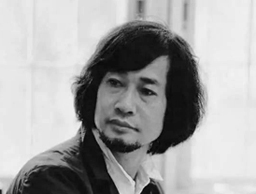
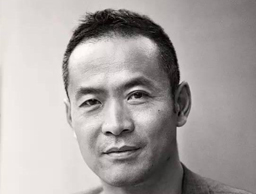

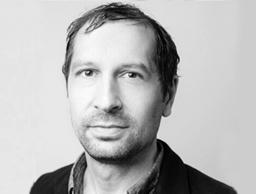
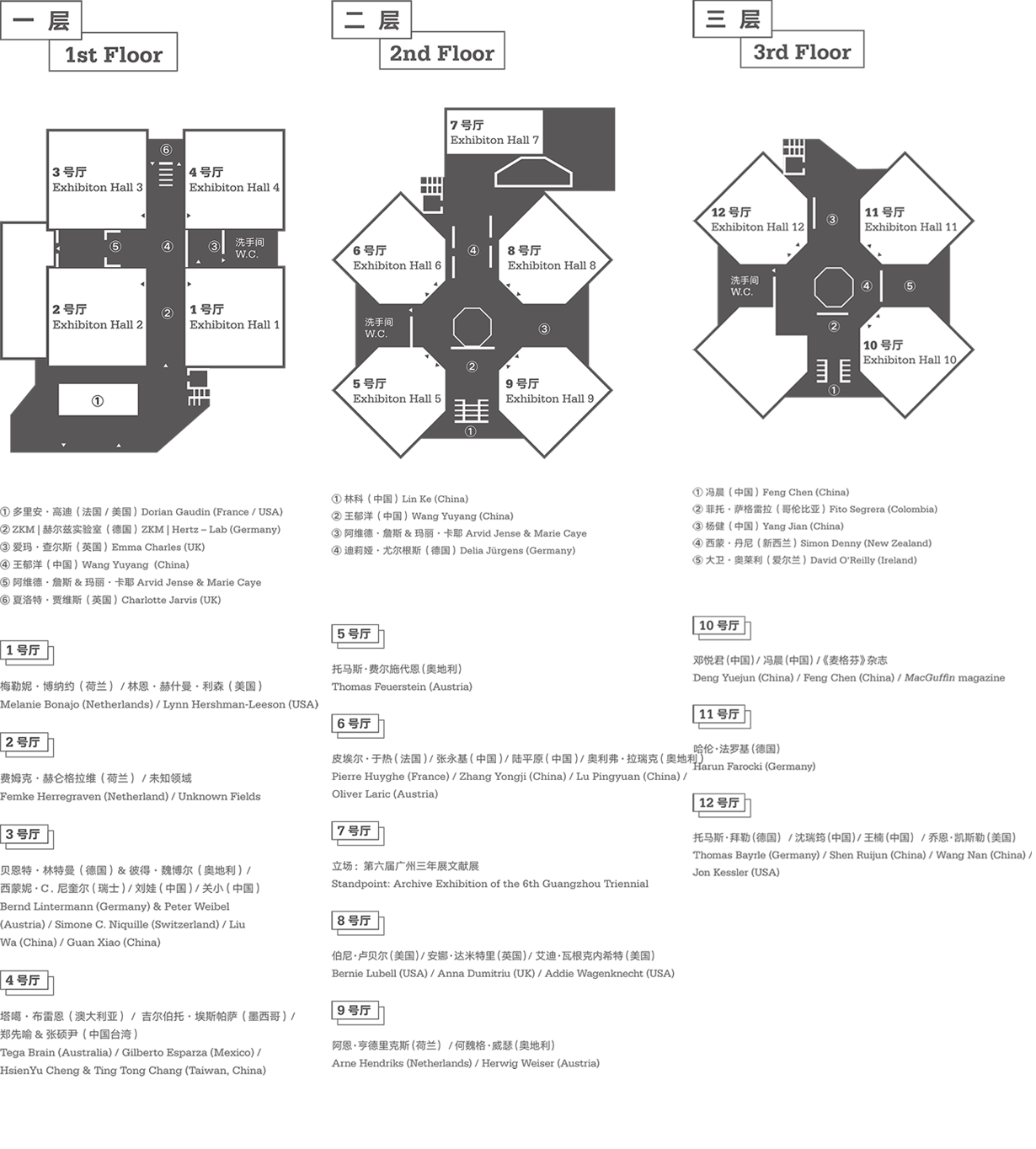
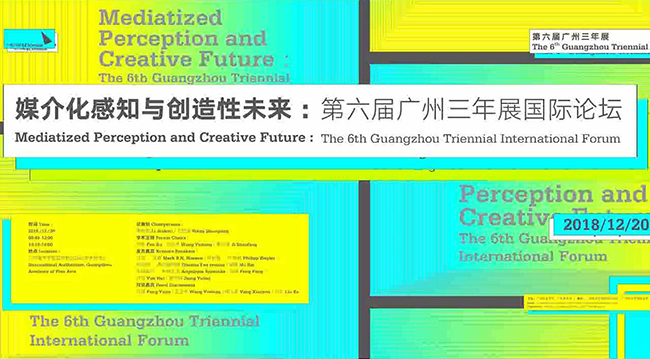 Academic Symposium
Academic Symposium
